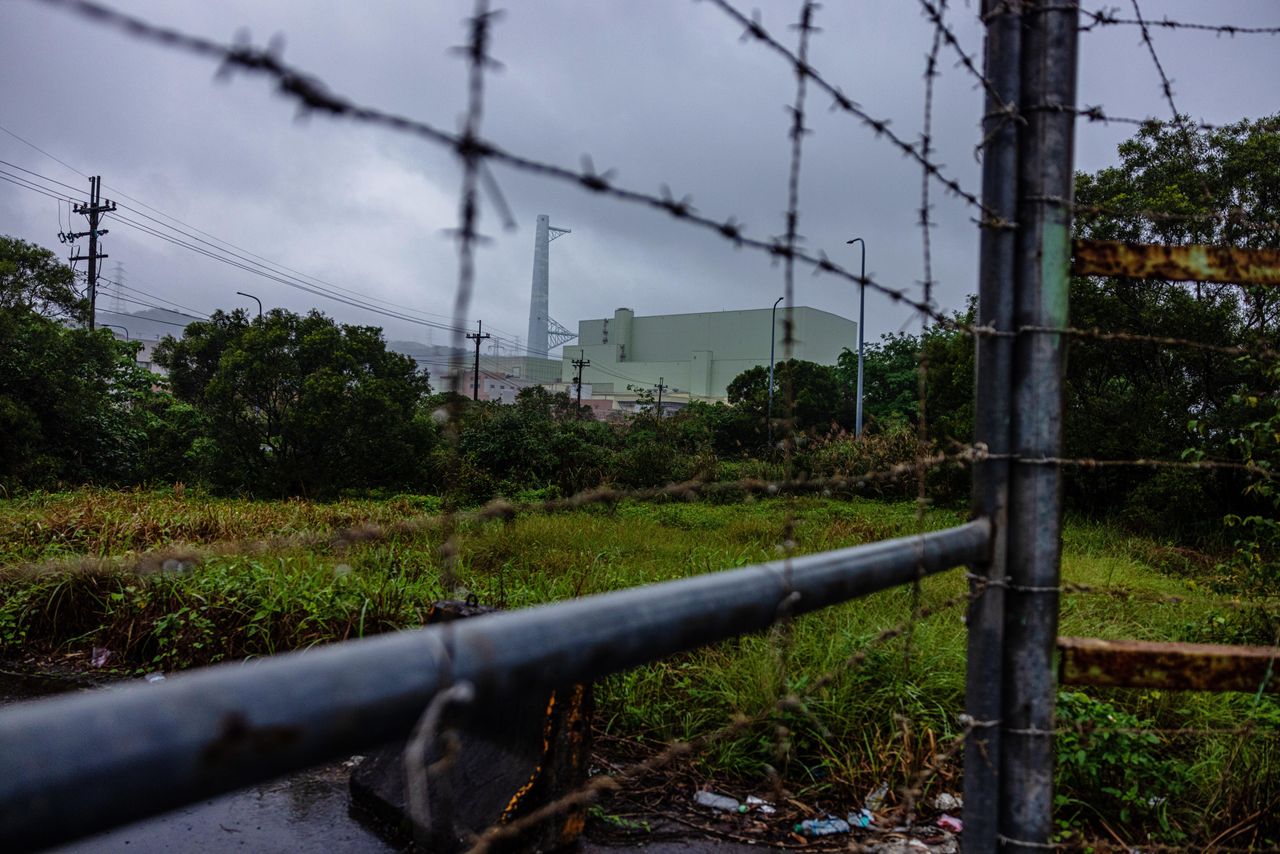NEW TAIPEI CITY, Taiwan ― Shrouded in late-morning mist and fenced in behind barbed wire, the facility looked at first glance like the sort of abandoned fortress where a mad scientist might carry out taboo experiments. As the rain petered out, an unremarkable exterior came into clearer view: a hulking pair of windowless cubes with what looks like a smokestack rising between them.
What you make of what’s going on inside the Lungmen Nuclear Power Plant depends on whether you think atomic energy and the radioactive waste it produces present more urgent threats than climate change or World War III.
If you agree that shutting down all nuclear reactors should take priority, then you’ll be pleased to know the plant, right now, does nothing. In 2016, before the facility could be completed, the ruling Democratic Progressive Party took power and swiftly passed a national law mandating a “nuclear-free homeland” by 2025. With that, Taiwan’s president, Tsai Ing-wen, canceled Lungmen and started shutting down reactors at Taiwan’s other three nuclear stations.
If, on the other hand, you think Taiwan can ill afford to eliminate its most dependable source of carbon-free electricity as emissions soar and China credibly threatens to seize control of the self-governing island for the first time in more than a century, then the idle Lungmen plant is a monument to squandered potential.
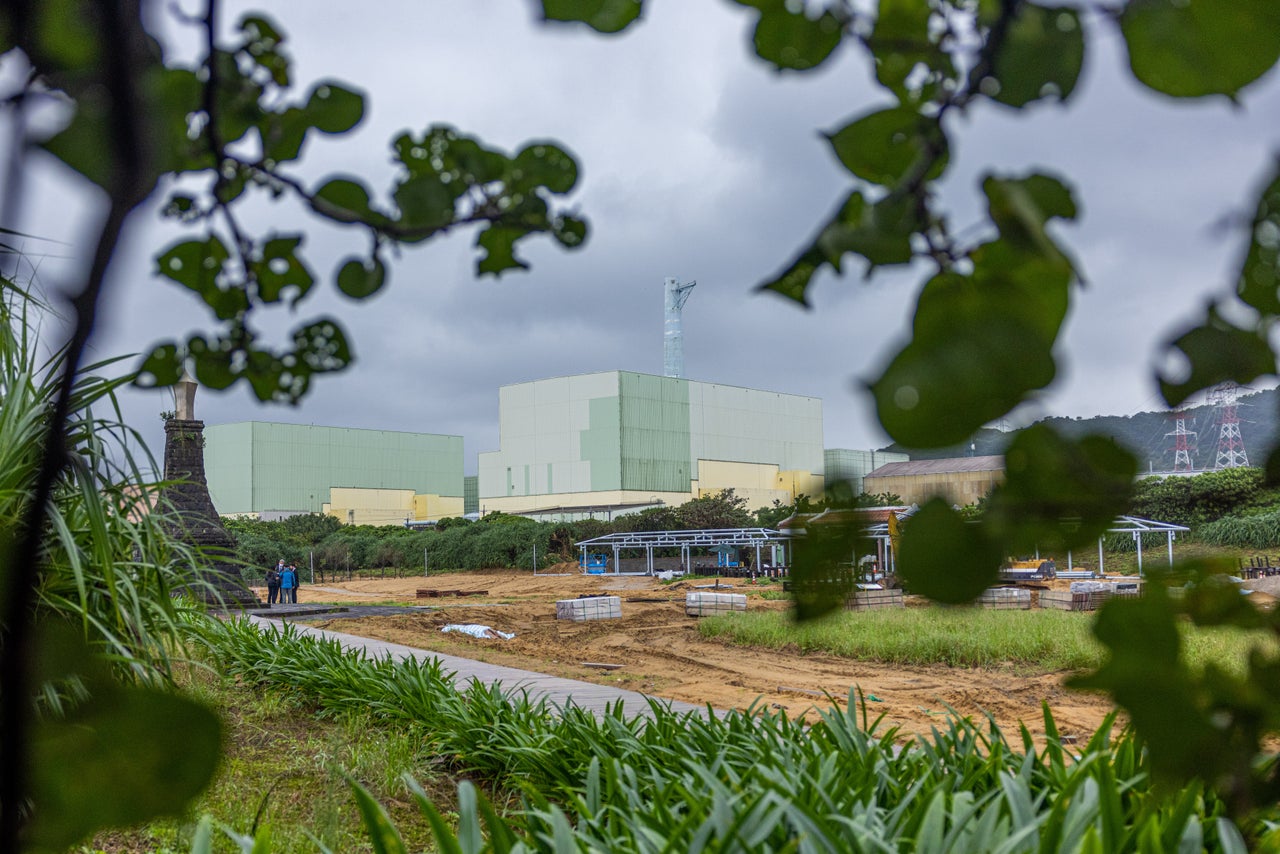
Its two 1,300-megawatt reactors are among the most advanced commercial fission machines on the market and would have been the first of their kind constructed outside Japan. At full capacity, this plant could meet roughly 7% of Taiwan’s electricity demand by itself without producing carbon dioxide (CO₂) regardless of whether the sun shines or the wind blows. And while the coal and gas that now provide most of Taiwan’s power depend on steady imports, nuclear reactors could crank for up to two years before needing fresh uranium fuel. That makes atomic energy less vulnerable to a Chinese blockade, like the one that followed Rep. Nancy Pelosi’s controversial visit to Taipei in August, when the California Democrat was speaker of the U.S. House.
“It’s not fair to Taiwan and it’s not fair to the nuclear engineers who spent the best years of their lives working on this plant,” Wang Bohui, the retired supervisor who oversaw Lungmen’s construction, said, wiping raindrops from his glasses as he looked at the facility from a park between the plant and a scenic cove it would have used for cooling water. “It was all for political reasons.”
I had come to Taiwan in early November for a weeklong press junket with about 30 journalists from more than a dozen countries. The itinerary, organized by the Ministry of Foreign Affairs, included visits to government agencies, politically aligned think tanks and corporate headquarters of companies that play a role in the green economy. The trip overlapped with the United Nations’ climate summit in Egypt, where Taiwan’s diplomatic isolation prevented one of the world’s top 25 emitters from participating in the carbon-cutting negotiations.
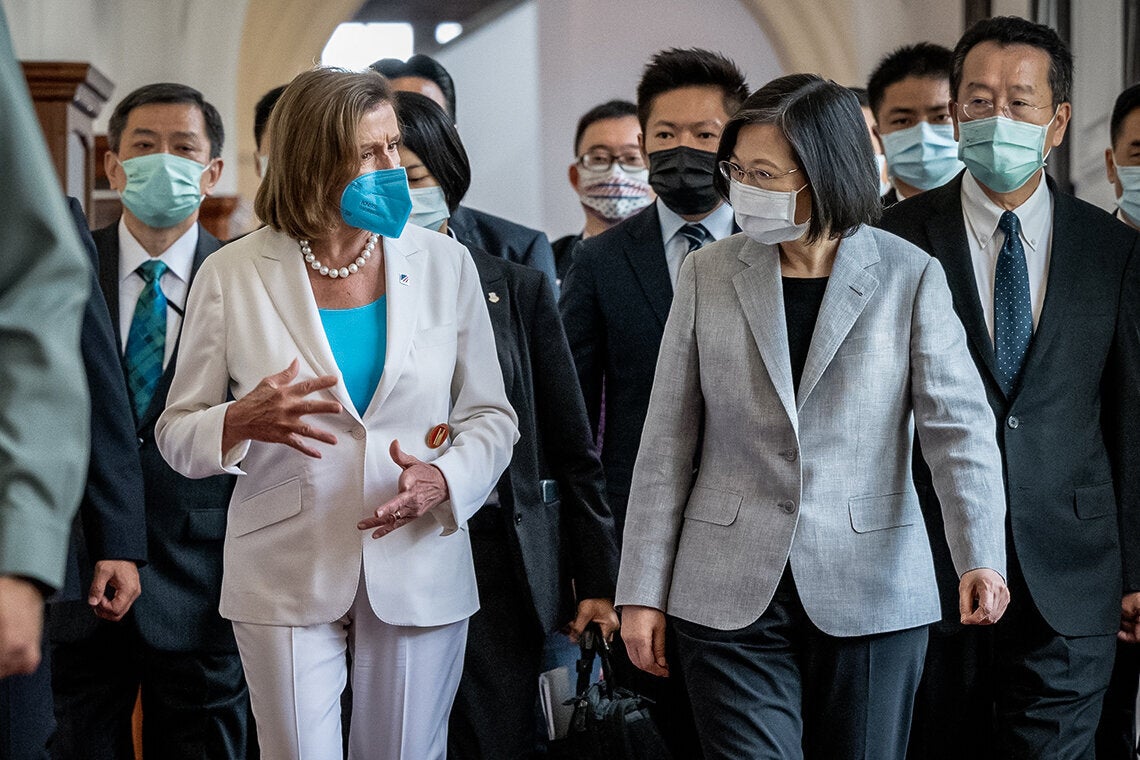
The message was clear: Taiwan faces a growing threat from mainland China ― the digital affairs ministry clocked millions of cyberattacks on government websites per day ― and the world must pay attention. For many, it was all they could think about. Since Russia invaded Ukraine last February, pundits the world over have predicted that it was only a matter of when, not if, China would launch a similar takeover of the island it once controlled. As Ukraine’s democratic allies braced for power shortages amid the rush to stop importing Russian gas and oil, nuclear reactors suddenly seemed like practical and dependable assets for any energy arsenal.
Even as combat threatened an accident at its largest nuclear plant, Ukrainian officials were placing orders for more reactors and buying up electric vehicles, seeing the battery-propelled cars powered with fission electricity from atomic stations Kyiv controls as a safer bet than ones that run on Russian diesel.
But the rumble of bombs exploding from above seemed a more distant concern in Taiwan than the tectonic thunder below. The island sits on the edge of the Pacific Ring of Fire, a seismic hotspot prone to major earthquakes like the one in 2011 which caused a tsunami that flooded generators at the nuclear plant in Fukushima, Japan, triggering a meltdown.
“We get earthquakes every single month, if not day, if not moment,” said Kuan-Ting Chen, a special assistant to President Tsai. “Sometimes it’s irreversible when human engineering cannot handle a problem that big. The consequence would not just be one generation’s to handle; it will be for generations and generations to face.”
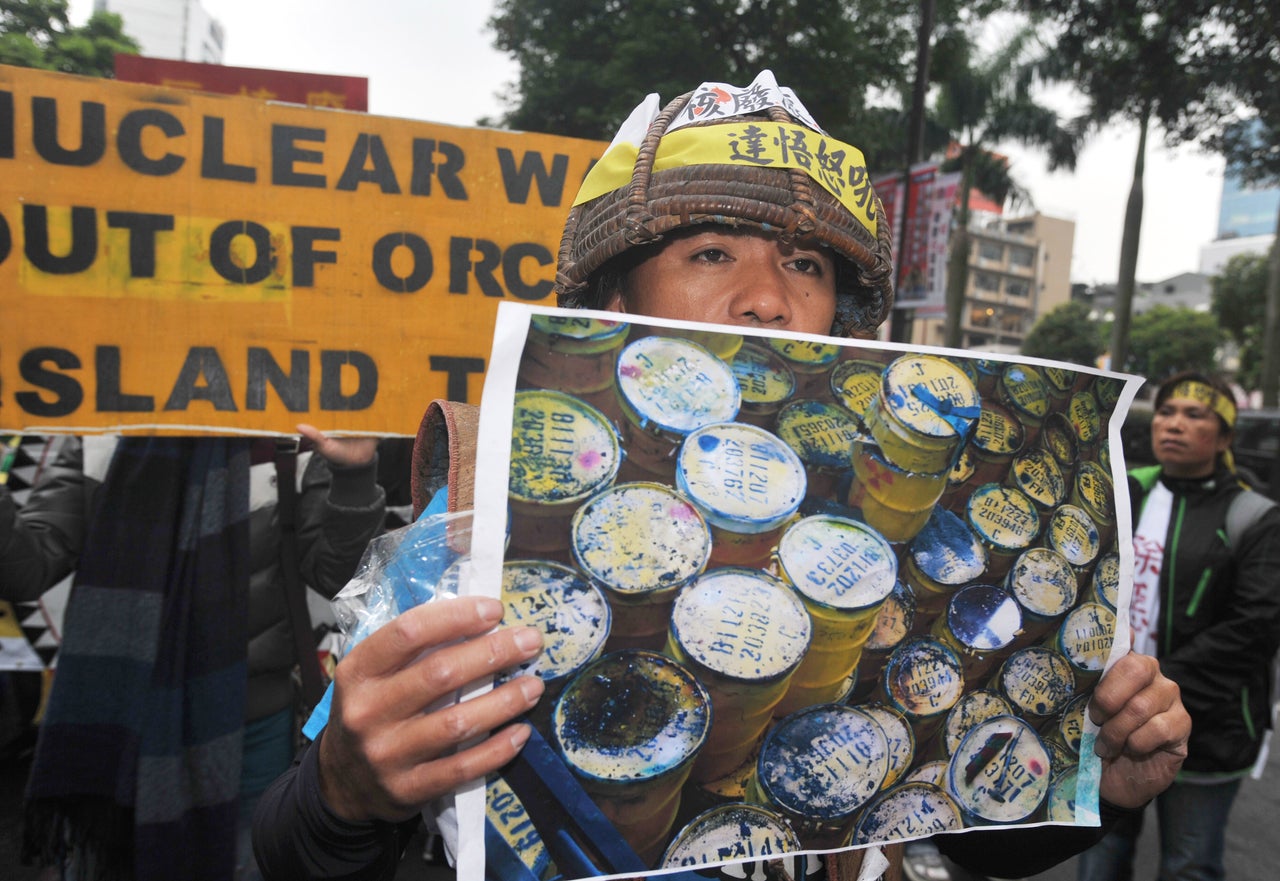
Despite the visceral fears of blaring sirens and leaking nuclear material, the risks at the plant may be overstated. A Fukushima-like event at Lungmen could, according to one study that used an advanced computer model to measure how radiation would spread, contaminate nearly 10% of the island’s land, but with a dose equal to five pelvic CT scans. Another study published a year after the disaster blamed lax Japanese regulators for failing to enforce rules on the Fukushima plant’s owner. Recent research on cattle left alive in the Fukushima exclusion zone found no signs of cancer spikes, leading some scientists to conclude that stress from the evacuation posed a greater long-term health risk than radiation exposure.
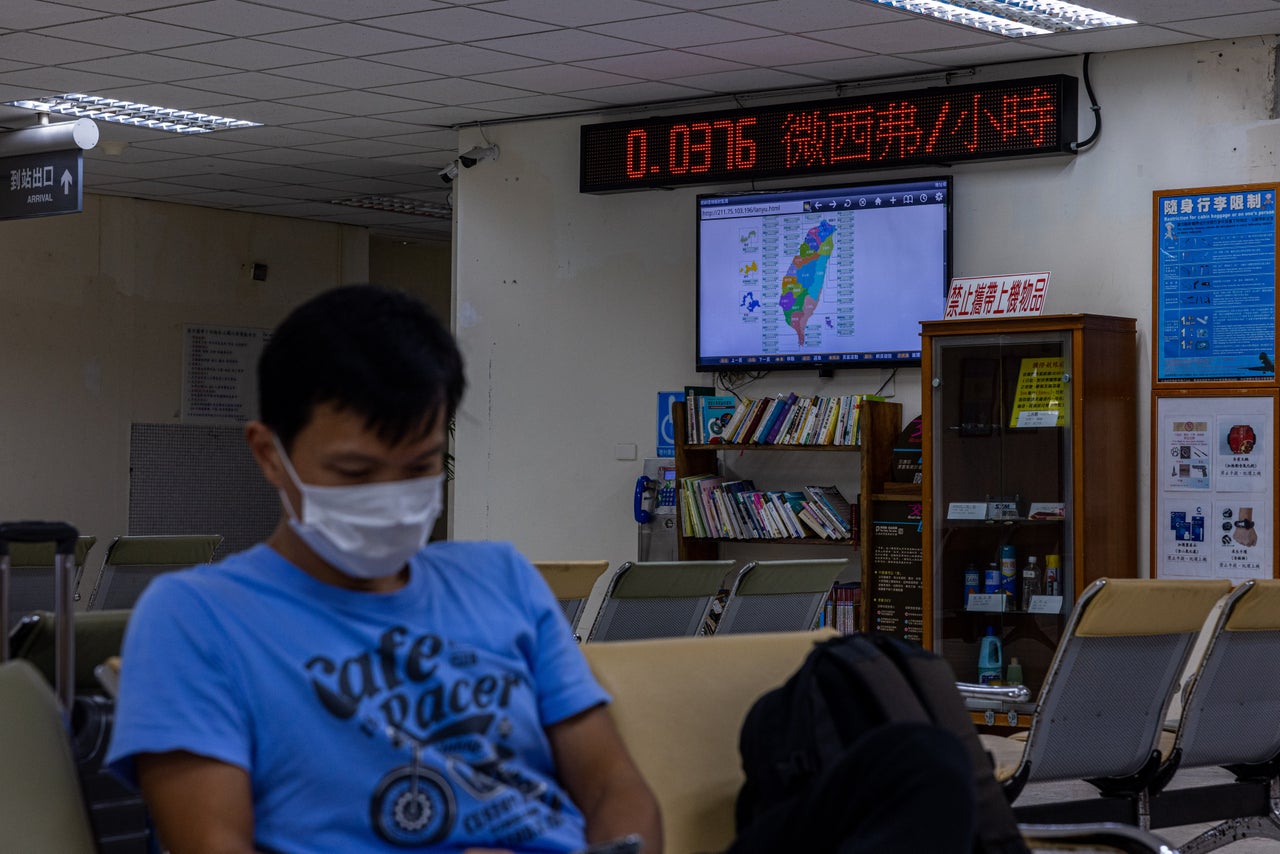
And Taiwan’s nuclear fleet has weathered shockwaves since its inception. The deadliest earthquake in Taiwan’s modern history killed thousands in 1999, but the most directly affected nuclear reactors automatically shut off, restarting just two days later.
Admittedly, nuclear safety is a secondary concern, Tzi-Chin Chang, Taiwan’s environment minister, told me in a conference room in Taipei.
“The first problem is how we deal with the waste,” he said.
Radiation decays in half-lives over time, but it takes centuries for spent fuel to return to uranium’s natural level of toxicity. As in the 32 other countries with nuclear reactors, Taiwan’s spent fuel is stored on site for decades. Only one country has completed a permanent repository for waste. Taiwan’s effort to store some low-level radioactive trash at a facility on the remote Orchid Island caused a national scandal in the 1980s.
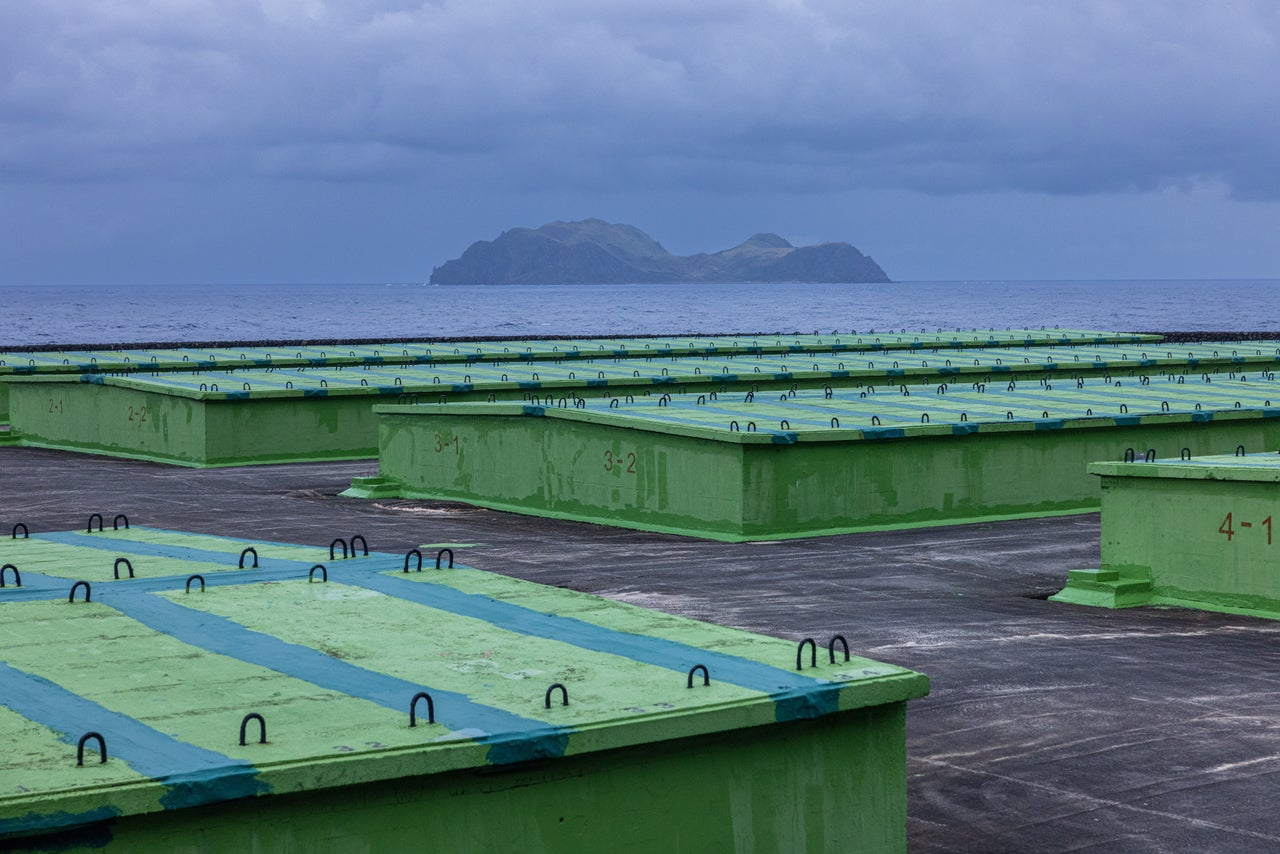
“The reason why we stopped the operation of the nuclear power plants is because we do not have enough space to store nuclear waste,” Chang said. “That’s the reason why we’re trying to reach a nuclear-free homeland.”
Quitting nuclear power comes with tradeoffs. In Taiwan, electricity shortages quickly followed the closure of two working reactors at two older nuclear plants. For 104 days of 2017, the state-owned power company faced generating shortfalls, which crescendoed into an islandwide blackout on Aug. 15, 2017. Fearing more blackouts as air conditioners roared the next summer, the government restarted one of the two reactors, which still had years left on its operating license, in June 2018. That year, the number of days with insufficient power supply dropped to 29. In 2019, it was zero.
But that reactor’s license is now scheduled to expire in March, and the government has no plans for renewal.
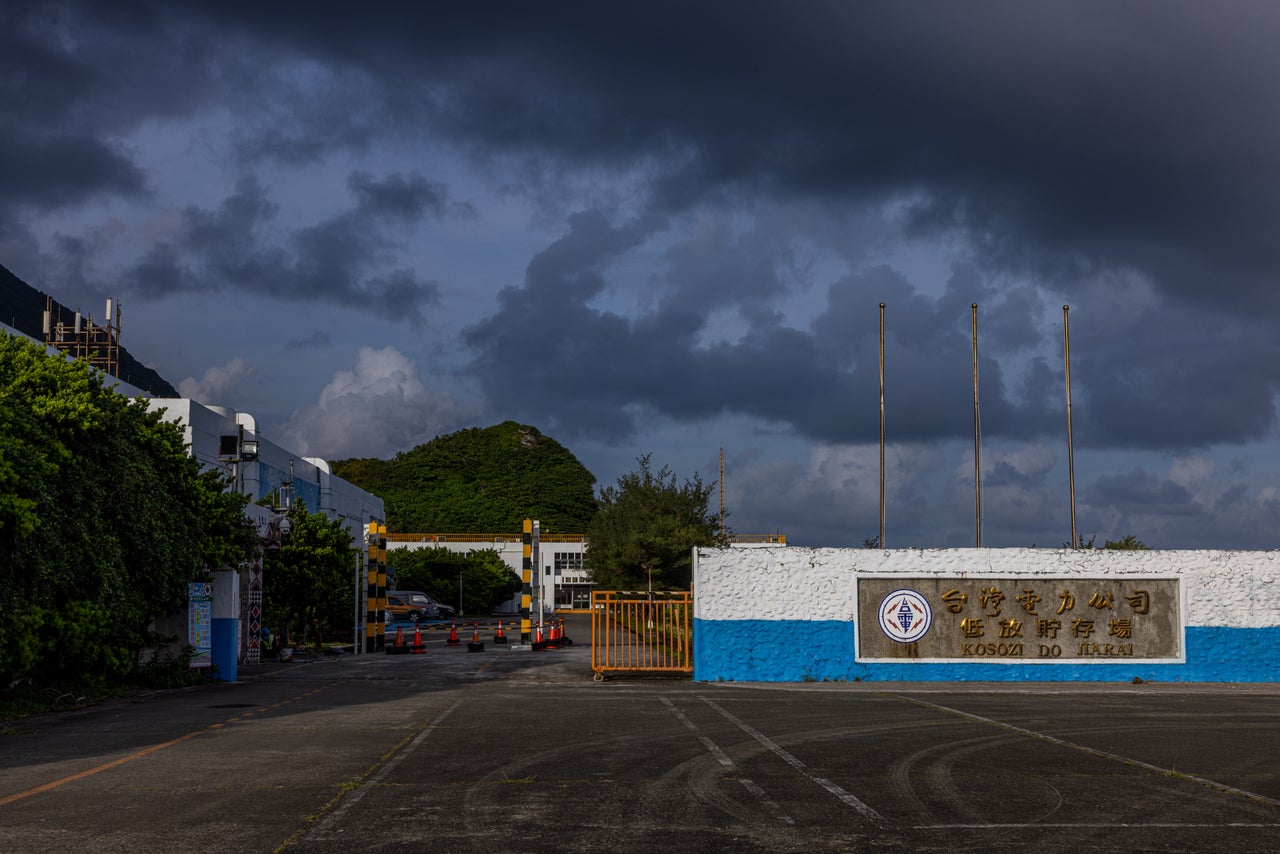
Countries including China, the United Arab Emirates and Finland kept building nuclear reactors after Fukushima.
But with voters’ fears of nuclear Armageddon renewed, most of the world’s most powerful democracies abandoned nuclear energy. Japan promptly halted its reactors. South Korea set its own “nuclear-free homeland” target. And Germany led the way with the world’s most aggressive phaseout.
In the United States, on the other hand, utilities canceled all but two new reactors under construction and allowed natural gas, made cheap through fracking, to drive otherwise-functioning nuclear plants out of business.
This global trend marked a bet that the natural gas flooding the global market from fields in Texas, Qatar and Russia would remain abundant while we worked out enough of the kinks with batteries, renewables and efficiency to run a modern economy without fossil fuels. To date, the only large countries that have managed to decarbonize their power grids without nuclear energy are bestowed with either hydroelectric dams or easily accessed geothermal resources.
And even that supposes that the climate effects of natural gas fall in line with the rate of emission cuts needed to avoid catastrophic global warming ― and that the industries profiting off gas will willingly surrender the market to cleaner and equally capable rivals. It also prescribes the same long-term solution, renewables that require certain weather conditions and vast tracts of land, regardless of countries’ unique conditions.
As the floods, fires and freak storms of the past few years made climate change tangible, many countries began to reconsider the global rush away from the most efficient, zero-carbon energy source yet harnessed by humans. Once Russia’s invasion of Ukraine spurred a global energy crisis, the tides really turned. Japan fast-tracked restarting its reactors. South Korea elected a new president who campaigned on restoring the country’s atomic glory. The U.S. is now not only planning for new nuclear reactors, it also is helping to build them around the world. Even Germany reluctantly paused the decommissioning of its last three nuclear plants.
But Taiwan is holding firm against nuclear power. The country has built as many as five new coal-fired plants over the past few years. None was fitted with hardware to capture and store CO₂ before it enters the atmosphere. The country aims for coal to make up 30% of the energy mix in 2025, a drop from nearly 45% today. But 50% of power generation two years from now is supposed to come from liquefied natural gas, up from about 37% today.
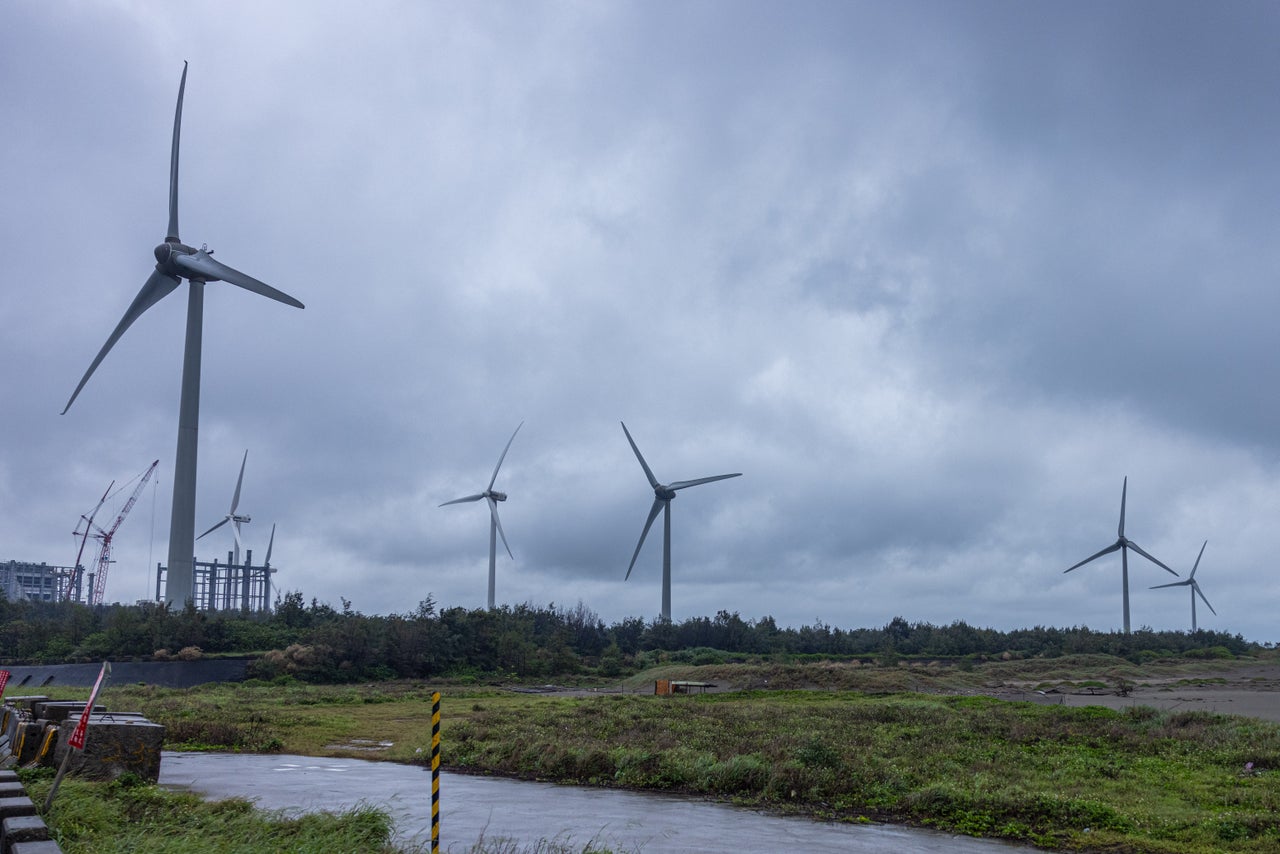
Taiwan, like most countries on the Pacific Rim, has no reserves of natural gas and keeps only about a week’s worth of the fuel in storage. Though it has plans to extend that stockpile to about two weeks in the years to come, the threat of a Chinese missile tests last year across the Taiwan Strait was enough to upend supplies as gas barges destined for Taiwan’s ports were rerouted.
The Tsai administration initially promised that renewables would offset the nuclear plants’ loss by providing 20% of Taiwan’s electricity by 2025, with offshore wind turbines doing the bulk of the work. With two years to go, wind provided less than 1% of Taiwan’s energy in the most recent statistics, while solar fell far short of cracking 3%. That almost certainly means the government will miss even its revised target of 15%.
Against that backdrop, Taiwan is going full-steam ahead toward becoming only the third country ever to successfully stop using nuclear power. And the biggest economy to do so, Italy, just elected a prime minister who supports bringing back atomic energy.
If its plan falters, Taiwan will sacrifice the cheap, reliable electricity that fostered the high-tech manufacturing industry ― and one that helps assure Taiwan’s de facto independence.
Taiwan Inc. Wants Atomic Energy
Alessandro Sossa certainly has not bought into the plan. Delta Electronics, the $25 billion tech conglomerate where he works as a project manager, sells batteries, solar equipment and tools to conserve energy. But an island with slightly more acreage than Maryland and a population 1½ times that of the Netherlands simply doesn’t have enough space for renewables alone to meet future energy demand, he said.
“Personally, I believe nuclear should definitely be part of the equation, too,” the Italian, a sharp dresser who wore his hair in a slicked-back, bleached mohawk, said during a visit to his employer’s Taipei headquarters. “A lot should be nuclear.”
The Taiwan Semiconductor Manufacturing Co., the world’s biggest and most important microchip maker, warned in its latest sustainability report that power outages threaten its business going forward, especially as demand for energy is set to increase throughout this decade.
“A meaningful percentage of Taiwan’s energy is simply used to power machines inside of chip-making facilities,” said Chris Miller, a Tufts University professor whose recent book “Chip War” tracks and maps the growing geopolitical tension over semiconductor supply chains. “So there’s a direct relationship between how the energy question is resolved and the island’s chip-making future.”
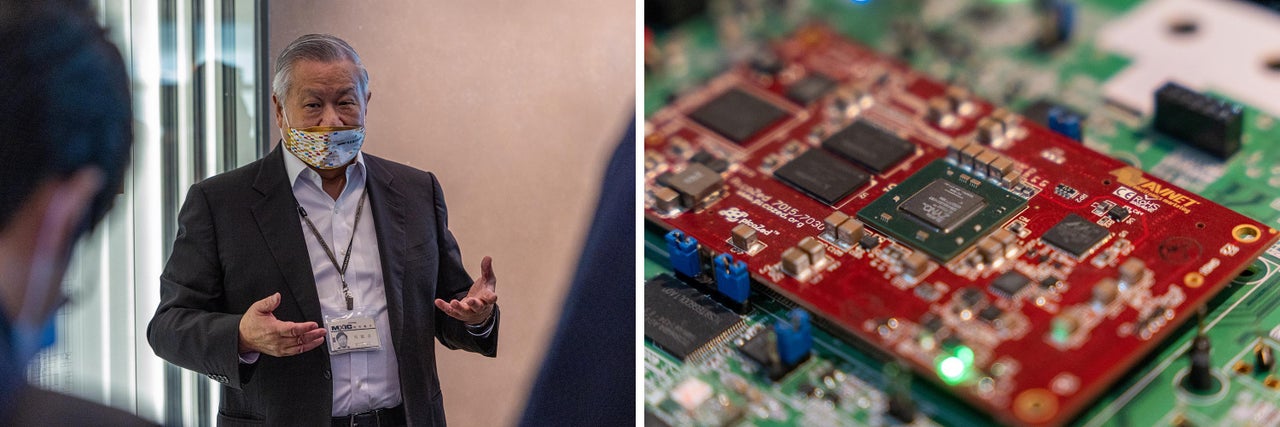
On a press tour of Macronix International’s sleek offices in the Taiwanese Silicon Valley city of Hsinchu one afternoon, the semiconductor giant’s billionaire founder, Miin Wu, ably deflected questions on hot-button issues. Pressed, for example, on whether his company’s sales of drones to China’s military fulfilled the Leninist adage that capitalists will sell their hangmen the rope, Wu just let out a hardy chuckle.
Asked about recent power outages, however, he grew serious. Power outages, he said, were a problem “more critical than anything else.”
Electricity shortfalls weren’t completely responsible for the increasingly frequent blackouts that have roiled Taiwan since 2017. At least one major outage last March was reportedly triggered by a utility employee flipping the wrong switch. The Ministry of Economic Affairs, which oversees the state-owned Taipower utility, a monopoly, blamed an aging power grid and said it was investing nearly $5 billion in upgrades to modernize the distribution network over the next decade.
When electricity demand has eclipsed the available power on the grid, microchip factories have generally been spared any supply cuts, a benefit of the industry’s geopolitical importance. But steelmakers and other big manufacturers complained in 2021 of repeated power cuts, and millions of Taiwanese households at a time have suffered outages in recent years.
Outages have quickly turned deadly. A blackout last March reportedly killed at least one person whose oxygen machine stopped working.
And some companies want to take energy production into their own hands. Formosa Plastics, a titan of Taiwanese industry, is considering building a small nuclear reactor at one of its overseas factories, possibly in the Philippines, according to a source with direct knowledge of the company’s plans. With time, the source said, the $18 billion company hoped Taiwan would change its laws and allow construction of similar reactors at domestic factories. The company did not respond to a request for comment.

Grid operators must line up enough electricity generation to cover all potential demand scenarios. Taipower tends to err on the conservative side, keeping at least 10% more generation on standby than what’s needed to cover any losses or surges. With steady coal and gas shipments, that’s not a big problem. But the Chinese blockade that followed Pelosi’s visit forced barges carrying fuel destined for Taiwan to make detours or postpone the deliveries overall.
“We all make suggestions to the government that nuclear might be part of the solution,” Wu said.
“We all know there are new technologies available,” he added. “So hopefully that opinion will be accepted by the government.”
By new technologies, he meant small, modular reactors, essentially low-power fission engines like those powering naval vessels. Industry analysts believe so-called SMRs will prove cheaper and easier for Western utilities to build than conventional reactors and generally expect the machines to hit the market in the 2030s.
Taipower, which falls under the Ministry of Economic Affairs’ Energy Bureau, is studying the possibility of building SMRs in Taiwan, said Chern-Chyi Chen, the agency’s deputy minister.
“We’re hopeful for a solution,” he told me.
But he warned: “This is very much dependent on mainstream democracy.”
“If people do not like having a nuclear plant, the government cannot force them,” Chen said. “That’s the situation now.”
How Nuclear Became Synonymous With Tyranny
Taiwan’s contentious history eventually gave way to nuclear projects that were largely noncontroversial — at first.
For centuries, the island was a territorial chess piece for competing powers, from warring sides of the Chinese civil war to the imperial Japanese. Chinese imperial courts in the 18th century coined a Mandarin phrase about Taiwan: “Every three years an uprising, every five years a rebellion.”
In the mid-20th century, the Chinese nationalists who had just lost a civil war to the Communists fled to Taiwan and set about industrializing the country. The party, known as the Kuomintang, or KMT, had an issue: Industry requires lots of energy. Taiwan has virtually no coal, oil or natural gas of its own, and its electrical grid has no connections to other countries. Following a 1973 oil crisis, it became clear the country’s future growth hinged on dependable energy.
The Jinshan Nuclear Power Plant, based on a U.S. design, opened in 1978. The timing was fortuitous. A year later, the United States would deal Taiwan a blow by formally cutting off diplomatic ties as part of Washington’s newly normalized relations with Beijing. That same year, the partial accident at the nuclear plant on Pennsylvania’s Three Mile Island effectively ended U.S. companies’ orders for new atomic power stations.
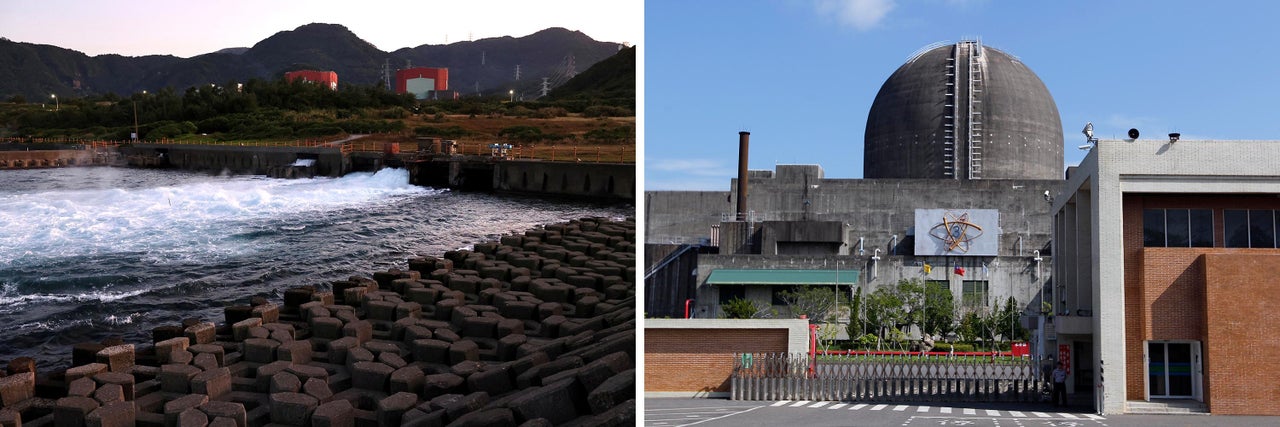
Not Taiwan. The island kept building nuclear reactors. In 1981, Taiwan opened its second, even bigger facility, the Guosheng Nuclear Power Plant. The third, Maanshan Nuclear Power Plant, the only station in southern Taiwan, came online in 1984.
In the late 1980s, the U.S. Central Intelligence Agency, hoping to maintain a relatively peaceful status quo on both sides of the strait, sabotaged Taiwan’s clandestine nuclear weapon program. But by that point, cheap electricity rates and pro-development policies had transformed Taiwan into a manufacturing powerhouse, with industrial exports surging sevenfold in the decades since the 1950s.
And though it did not yet matter in a world where global warming was not widely understood, 62% of Taiwan’s electricity at that point came from non-emitting sources, primarily nuclear reactors.
The government even came up with a solution for low-level radioactive waste, setting up a dump site on Orchid Island, a speck of volcanic rock roughly three hours by boat from Taiwan’s southeastern shore.
With Taiwan’s “economic miracle” came demands for a similar revolution in the country’s politics. Students and activists staged protests and marches for democracy. In 1986, around the time the KMT proposed Lungmen as a fourth nuclear plant, the Soviet Union’s catastrophe at the Chernobyl atomic station offered a poignant example of how dangerous fission could be in the hands of unaccountable, autocratic regimes.
“If people do not like having a nuclear plant, the government cannot force them. That’s the situation now.”
- Chern-Chyi Chen, Taiwan's deputy economic minister
These activists wanted to remake Taiwan as a sovereign liberal democracy. To justify their claim to independence, some emphasized Taiwan’s Indigenous heritage. So when Orchid Island’s Indigenous population of Tao people, among the most culturally distinct of Taiwan’s 16 recognized tribes, began protesting the nuclear waste dump set up on their homeland, the issue quickly gained national notoriety.
Five months after Chernobyl, at a press conference at the Taipei Grand Hotel, the student activists illegally declared the formation of Taiwan’s first opposition party, the Democratic Progressive Party. Ending atomic energy and rectifying centuries of Indigenous oppression became key planks in the party platform.
Despite this act of public defiance, the KMT opted against a violent crackdown. The final push against one-party rule came in 1989, when Cheng Nan-jung, a pro-democracy activist and magazine publisher, lit himself on fire in his office, hoping a suicide by immolation would shake the regime. It worked. The democratization process that followed would result in Taiwan’s first free election in 1996.
The KMT refashioned itself as a conservative party in the new democratic system and held on to power for the rest of the century. In 1999, it finally approved plans to build Lungmen. But democracy proved messy for the former authoritarians, and a schism within the party helped the Democratic Progressive Party win the presidency for the first time in 2000.
At that point, construction of new nuclear reactors had stalled since 1985. After peaking in 1987 at 56% ― one of the highest percentages in the world ― nuclear power’s share of Taiwan’s energy mix dropped to roughly 20% at the dawn of the millennium.
The Fight Over Lungmen
Under pressure from the U.S. to avoid stoking hostility with Beijing, in May 2000, newly elected President Chen Sui-Bien agreed to say no to four things: declaring independence, changing the national title from “Republic of China,” rewriting the constitution to change the definition of “Republic of China” and holding referendums on any of those issues. The move drew criticism from DPP activists.
The so-called “four no’s” agreement with the U.S. said nothing about abolishing nuclear energy. To appease party activists, Chen passed off the decision on Lungmen’s future to a legislative committee in Taiwan’s unicameral Parliament. The committee voted 9-6 against building Lungmen, with three absentees.
Soon after, Chen announced his opposition to Lungmen. Outraged, the KMT-majority legislature first held up the entire government’s budget, then challenged the decision at the Supreme Court. Ultimately, the court ruled the executive branch’s unilateral cancellation of Lungmen was unconstitutional. Construction commenced in 2003.
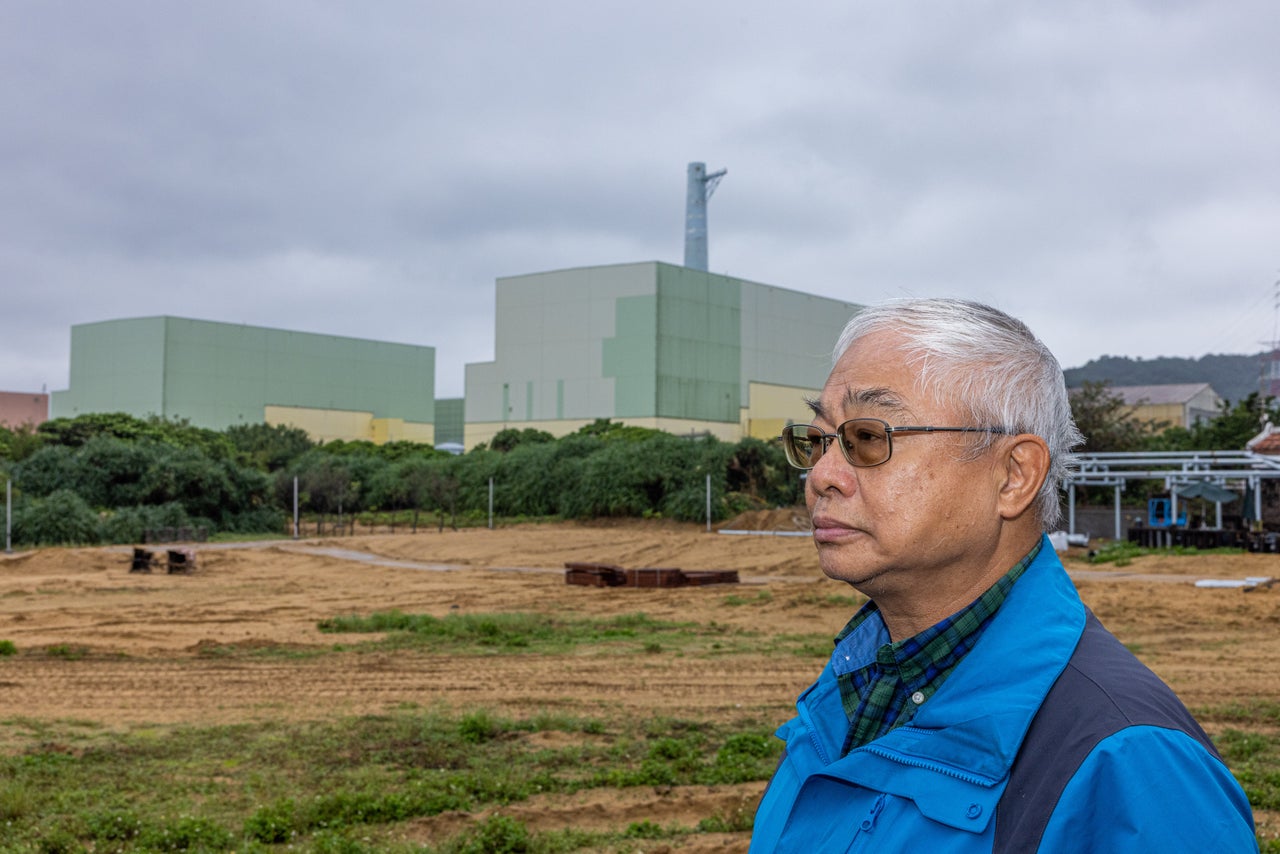
Early protests against the project were mostly small and local. At that time, the U.S., China, Europe, Japan and South Korea were on the cusp of a “nuclear renaissance,” with dozens of new reactors planned as part of an effort to curb dependence on fossil fuels. Building a new plant was by then so uncontroversial that Tsai, then the vice premier in the Chen administration, visited the plant sometime around 2006 and offered whatever help she could to finish the project. Promising deliveries of gravel and hundreds of workers, she told Wang Bohui, the supervisor at the plant, before leaving: “Your work is critical for Taiwan.”
In the 2008 election, the KMT vaulted back to power, with Ma Ying-jeou, the Harvard-educated former mayor of Taipei, becoming the new president.
Unfortunately for Ma, who supported nuclear power’s expansion, problems at Lungmen started multiplying. Building delays mounted. Then, in 2010, workers discovered aboriginal artifacts at the site, a reminder to some of the symbolic link between nuclear energy and Indigenous hardship.
The next year, the tsunami hit Japan’s Fukushima-Daiichi nuclear plant. Without a secondary backup to keep the radioactive fuel rods cool, the plant suffered the world’s worst meltdown accident since Chernobyl.
There was not so much as a single radiation burn. Japanese officials traced just one death ― an emergency worker who died of lung cancer a decade after the incident ― back to radiation exposure. But the accident sent a shockwave around the world, apparently convincing governments from Sacramento to Berlin to Seoul that nuclear power posed a more urgent risk than global warming.
Work on Lungmen didn’t stop overnight. Once again, nuclear power was swept up in Taiwan’s partisan politics.
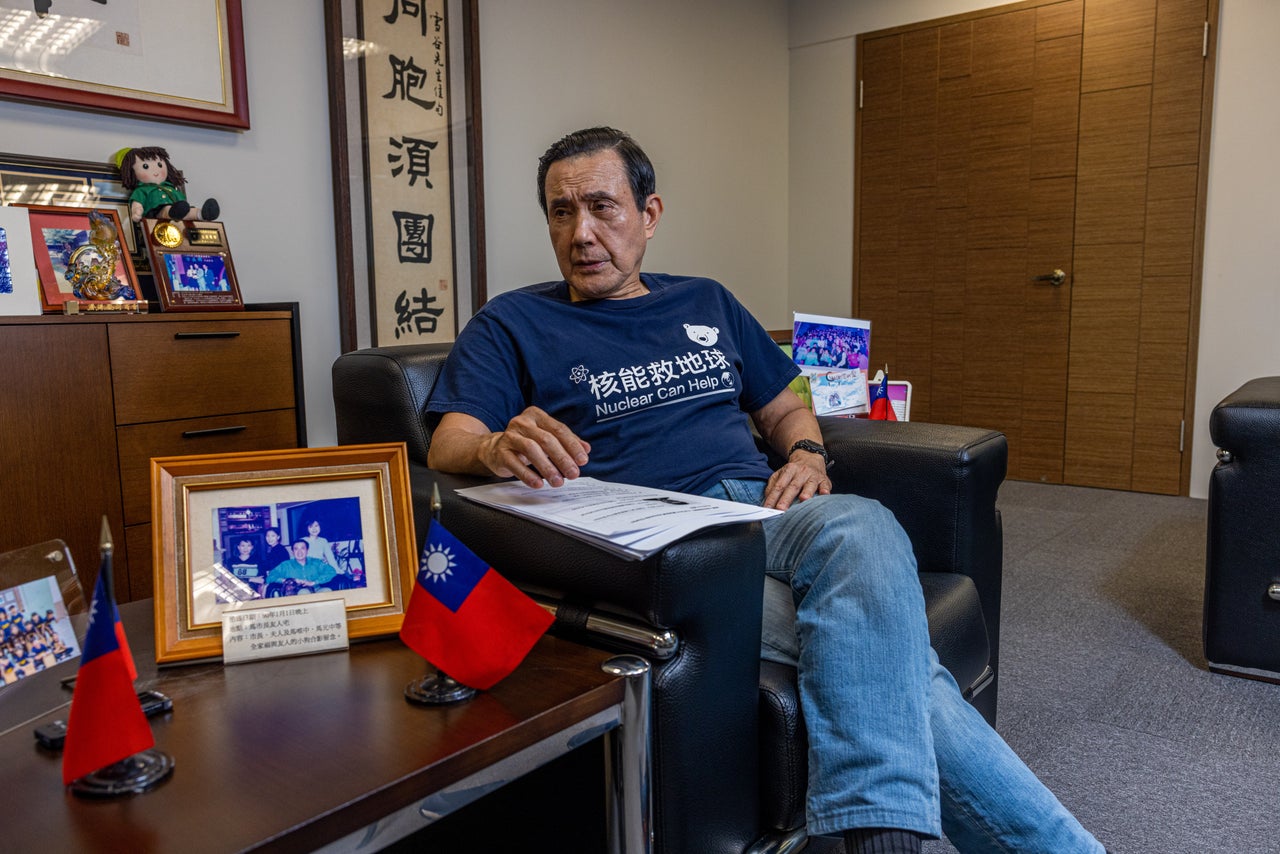
Ma had come to power promising closer ties with fast-growing China. In 2014, on the eve of signing a new trade agreement with the mainland, students stormed the Parliament. Fearing the pact was a precursor to annexation by Beijing, the protesters, chanting the slogan “My country, mine to save,” occupied the Legislative Building for a month before the police were sent in. The police violently beat demonstrators, stoking support, even among some members of the Nationalist Party, known as the Kuomintang, for what became known as the Sunflower Movement. Shortly afterward, Ma backed down.
Around the same time, Lin Yi-Hsiung, a high-profile activist politician and lawyer, went on a hunger strike to protest Lungmen. Lin, a founding member of the Democratic Progressive Party, whose mother and two young daughters were allegedly murdered by the regime in 1980, captivated a nation that had seen before how one activist’s physical sacrifice could effect change. Two weeks after Lin stopped eating, Ma shuttered Lungmen.
“You have to understand, Mr. Lin has been deified. He’s been treated like a god. Whatever he says, people have to follow,” Ma said one afternoon in an interview at his foundation’s office in a corporate tower in Taipei.
“The reason why I mothballed the nuclear power plant was precisely because I wanted to avoid the forthcoming clash between the people,” he said. Asked if by “clash” he meant an election loss for his party, he said yes.
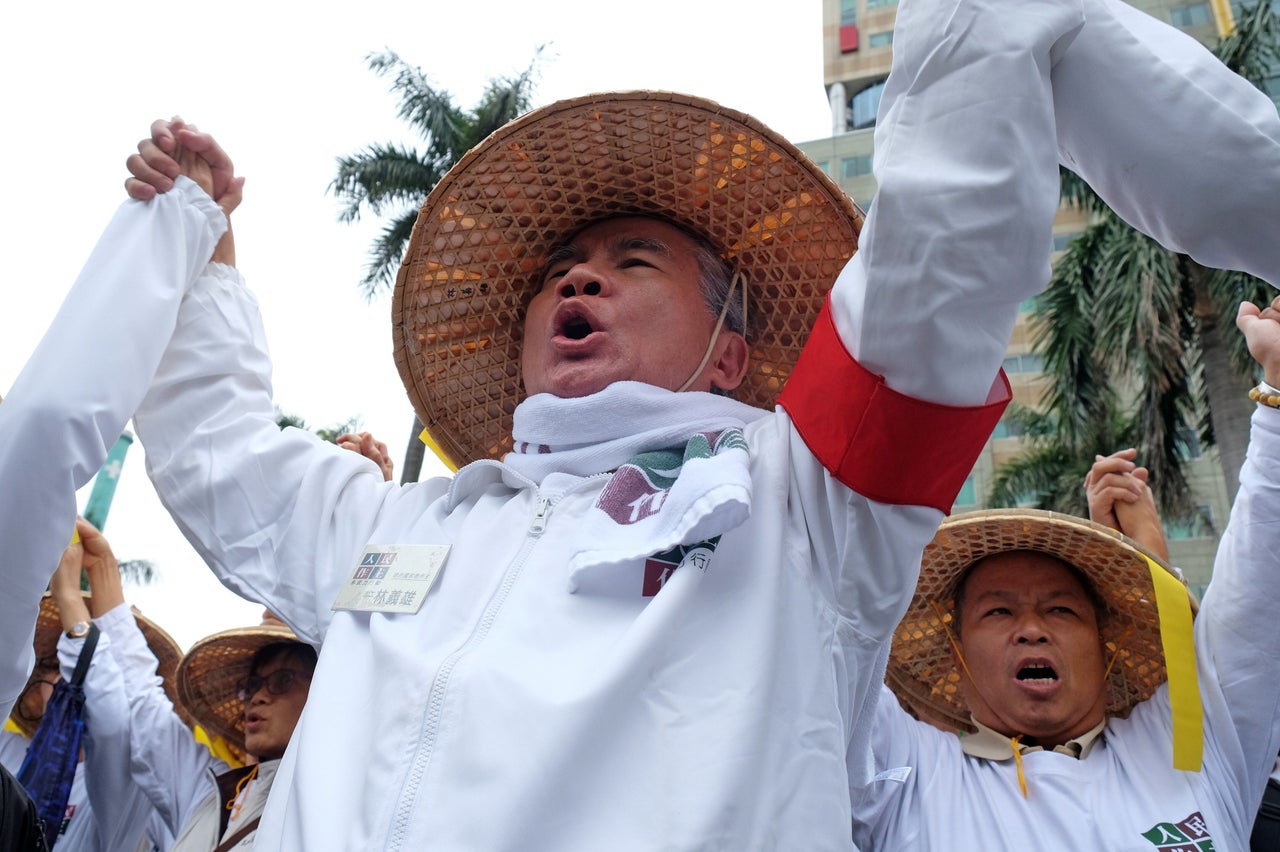
Tsai won the presidency in 2016. At first, her Cabinet dithered on the nuclear question, with one high-ranking official flip-flopping in public statements on whether to bring back shuttered reactors. Hoping to avert blackouts, the new administration quietly restarted two reactors at Taiwan’s second and third nuclear power stations.
But Tsai had campaigned on eliminating nuclear energy. Her party was filled with vehemently anti-nuclear activists. And the public perceived atomic power as a bigger issue than it actually was. A recent survey conducted by National Taiwan University’s Risk Society and Policy Research Center had found that 44% of Taiwanese believed the country still generated most of its electricity from fission, even though nuclear power made up less than 10% of the power mix.
With her DPP controlling a majority in the legislature, she approved changes to Taiwan’s bedrock electricity law, codifying a phaseout of nuclear reactors. Before long, her government actually removed the fuel rods from Lungmen’s reactors and sent the uranium out of the country.
The rest of the phaseout was intended to be gradual. When each remaining reactor’s license expired, the government would decline to renew the operating permits. It may sound simple, but due to the robust international regulation of atomic power, that process would be difficult to reverse and would automatically prompt decommissioning. So it’s not as though some future pro-nuclear presidency could flip a switch and bring the plants back online.
In November 2018, Taiwanese voters went to the polls to decide on a series of ballot measures asking whether the government should overturn the Tsai administration’s nuclear ban and continue building more coal-fired generators. The results showed support for keeping nuclear power and halting the new coal plants. Critics dismissed the results, arguing that the nuclear question in particular was confusingly worded. Either way, the votes did not require the government to alter its policy.
Unbowed, the Tsai administration shuttered the only reactor left at the Jinshan plant, Taiwan’s first nuclear plant, the next year. The final reactors were slated to close in 2025, the year after Tsai would be term-limited out of office.
In the meantime, Taiwan opened another coal-fired generator. Then another. And another after that. Drought made the hydroelectric stations nestled in the island’s central mountains less dependable. Installing enough solar and wind energy projects to make up the difference proved increasingly difficult as farmers and fishers claimed that photovoltaic panels and turbines were devouring vital cropland and fisheries. New gas-fired plants were under construction, but their future depended on increasing the supply of fuel to burn.
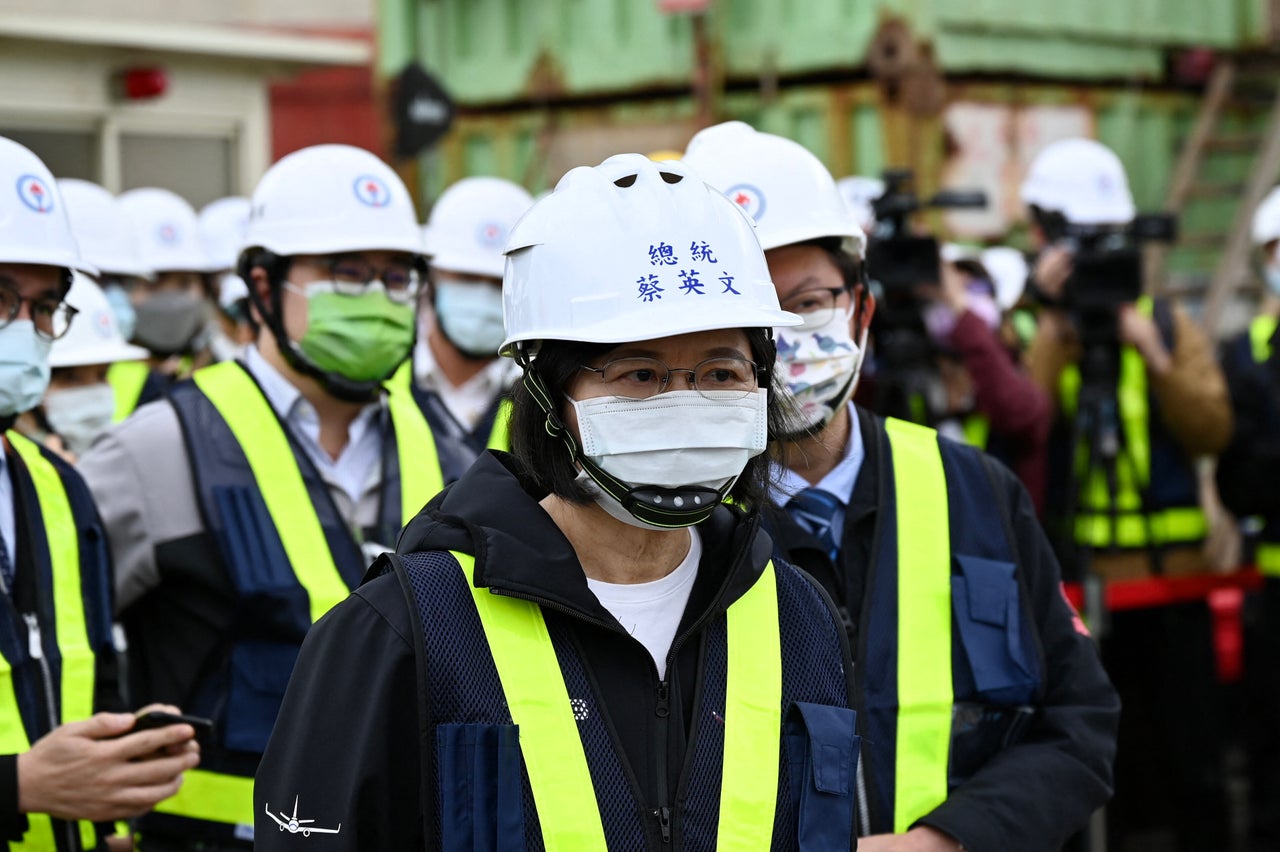
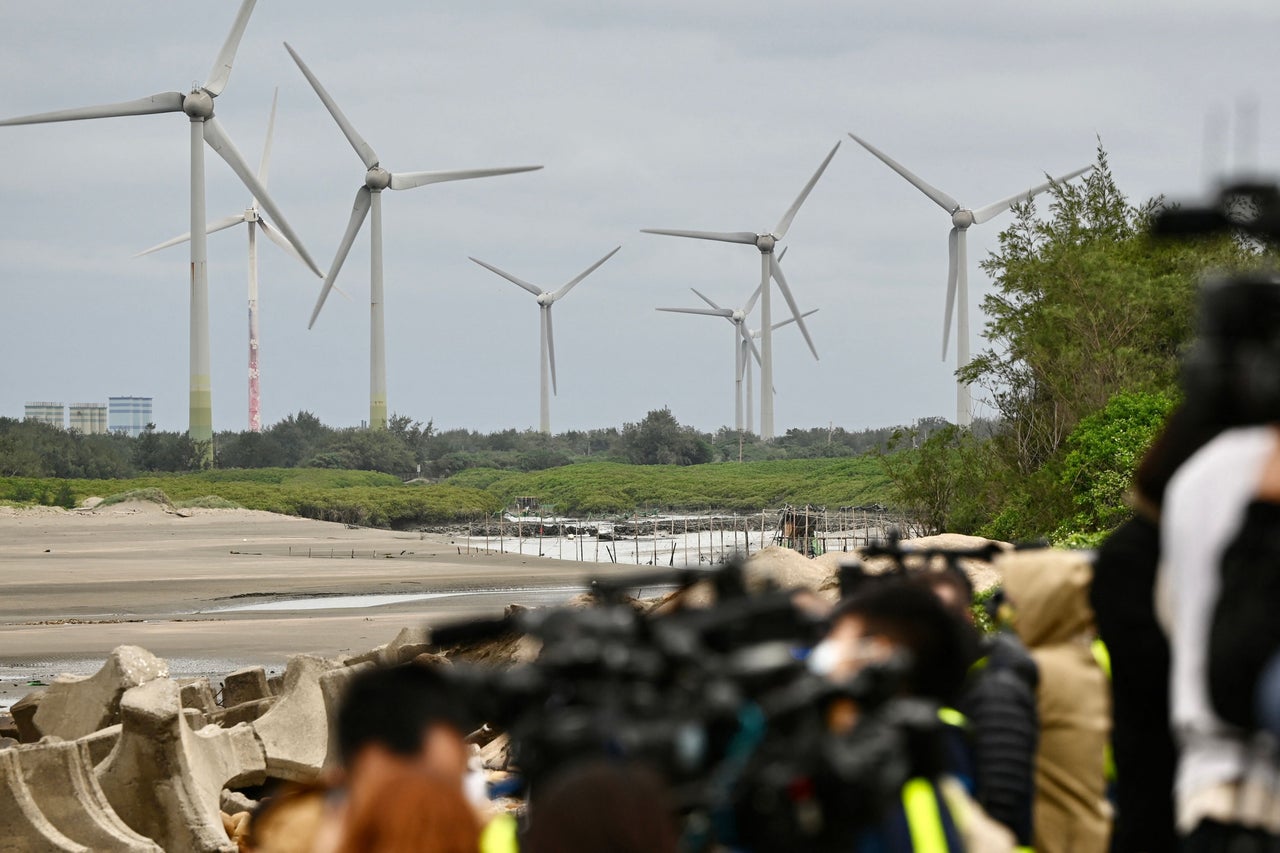
In December 2021, Taiwan held another set of referendums on whether to restart construction at Lungmen and whether to continue work on a $2 billion natural gas import terminal atop an 7,000-year-old, ecologically sensitive algal reef. Tsai had campaigned against both ballot measures and played them off each other, claiming that a rejection of the new gas infrastructure might force her administration to continue using nuclear power for longer.
Voters rejected the proposal to complete work on the fourth nuclear power plant ― and narrowly approved moving forward on the liquefied natural gas terminal.
Ma watched the debate closely. Wearing a T-shirt featuring a polar bear and the words “Nuclear can help” in English, Ma, 72, seemed more like an elder statesman in the twilight of his career than a former head of state who just eight years ago held a historic summit with Chinese President Xi Jinping. But his post-presidency hasn’t tempered his penchant for political gossip.
“Just recently, when our president talked to the Nobel Prize-winning chemist Dr. Lee Yuan-tseh, the Nobel winner asked the president: ‘If you do this, what will happen in 2025?’” Ma said, recalling a conversation about Tsai’s energy policy. “Her answer was really shocking. She said, ‘Well, my term ends in 2024, so anything after that, I don’t know. I won’t be responsible.’”
(Lee did not respond to an email requesting comment.)
Ma twice called Tsai’s approach to energy “stupid.”
“The current government’s policy to develop renewable energy to replace nuclear power is, I think, the most stupid policy in the world. No country has done that. Why? Because nuclear power is considered green energy already,” he said. “We should use renewable energy to replace coal or natural gas. But not nuclear. More and more countries now understand that.”

Space For Waste
Whether it’s rods of cycled uranium pellets that can remain hot for years or low-level contaminated materials like hazmat suits and safety gloves, opponents of nuclear power have long listed radioactive waste as a top reason for mothballing reactors.
Spent nuclear fuel takes thousands of years’ worth of half-lives to decay back to the radioactive levels of the originally mined uranium. And given that the spent fuel is safely stored at power plants, few countries have even tried to build permanent waste solutions.
But that is beginning to change. Finland has begun entombing spent nuclear fuel in shafts dug 1,300 feet into the bedrock of an island on the Nordic nation’s southwest coast. When the facility called Onkalo opens this year, it will be the world’s first final disposal site.
Sweden, which also gets much of its electricity from fission, plans to construct a similar site just across the Gulf of Bothnia.
France, whose swift midcentury reactor-building spree famously decarbonized much of its grid in an astounding 15 years, is working on its own storage site.
In the 45 years since Taiwan opened its first nuclear plant, the country has produced nearly 23,000 spent-fuel assemblies, each of which contains 81 rods filled like a Pez dispenser with candy-sized pellets of enriched uranium.
Compare that to the U.S., whose fleet of more than 90 reactors, down from a peak of 119, is still far bigger than any other country. From 1968 to 2017, the U.S. produced roughly 280,000 spent-fuel assemblies.
That may sound like a lot, but it could all fit on a single football field stacked 10 yards high, according to the U.S. Department of Energy, and that’s including all the spent fuel generated since the 1950s.
A single coal-fired power plant in Puerto Rico, by contrast, produced an open-air ash pile several stories high. Like nuclear waste, ash is generally stored on site at power plants in large pools or heaps. But unlike highly regulated atomic stations, coal ash frequently leaches into waterways. While nuclear waste takes longer than a single lifespan to become less toxic, the arsenic and mercury concentrated in coal ash never become less deadly.
“All the spent fuel generated since the 1950s could fit on a single football field stacked 10 yards high, according to the U.S. Department of Energy.”
Solar panels and wind turbines don’t exude waste when producing electricity, but the devices don’t last long, and they’re piling up fast. By 2050, the U.S. and China could have a combined 30 million metric tons of trashed solar equipment ― roughly twice the total volume of garbage New York City produces every year. Wind turbine blades, which cannot be recycled in many cases, are stacking up in landfills, with thousands of aging machines scheduled for demolition across the U.S. and Europe just this decade.
In the best-case scenario, all that trash could end up recycled. It’s controversial, but coal ash has made its way into some building materials, to varying degrees of approval from environmentalists. And there simply isn’t enough lithium, cobalt and copper in the world to not recycle old solar panels, batteries and electric car parts.
Nuclear waste can also be recycled. Spent fuel still contains 95% of its energy once it comes out of a reactor, which is why it stays so radioactive for so long. Reprocessing waste into usable fuel is a costly and complex endeavor, which is why only a few countries, such as France, the United Kingdom and Japan, actually recycle their nuclear fuel.
Another drawback: There’s a thin line between recycling waste and enriching weapon-grade radioactive materials. Taiwan had tried to develop an atomic bomb only to have the CIA sabotage the effort in a bid to avoid war breaking out with the nuclear-armed mainland. And though the country stored its spent fuel at power plants like every other nation with commercial reactors, Taiwan also generated roughly 200,000 drums of low-level radioactive waste. From 1982 to 1996, a total of 97,672 of those drums were sent to Orchid Island.
Working with environmentalists who opposed nuclear energy, Indigenous activists from the Tao tribe fought to stop the shipments. The movement cast the anti-nuclear struggle in Taiwan as part of a familiar narrative, in which the atomic industry’s pollution, among other industrial waste streams, ends up in remote places where marginalized minorities live.
What happened on Orchid Island haunts even those who acknowledge the benefits of nuclear energy. It’s a common counter-argument against keeping reactors going.
At a bar serving homemade kombucha and playing experimental ambient and house music one Saturday night in Taipei’s Wanhua district, I found myself in two separate conversations with self-described undecideds on the question of nuclear power in Taiwan. Unprompted, each of them volunteered the waste issue on Orchid Island as an insurmountable hurdle to future reactors.
So I decided to go see the place for myself.
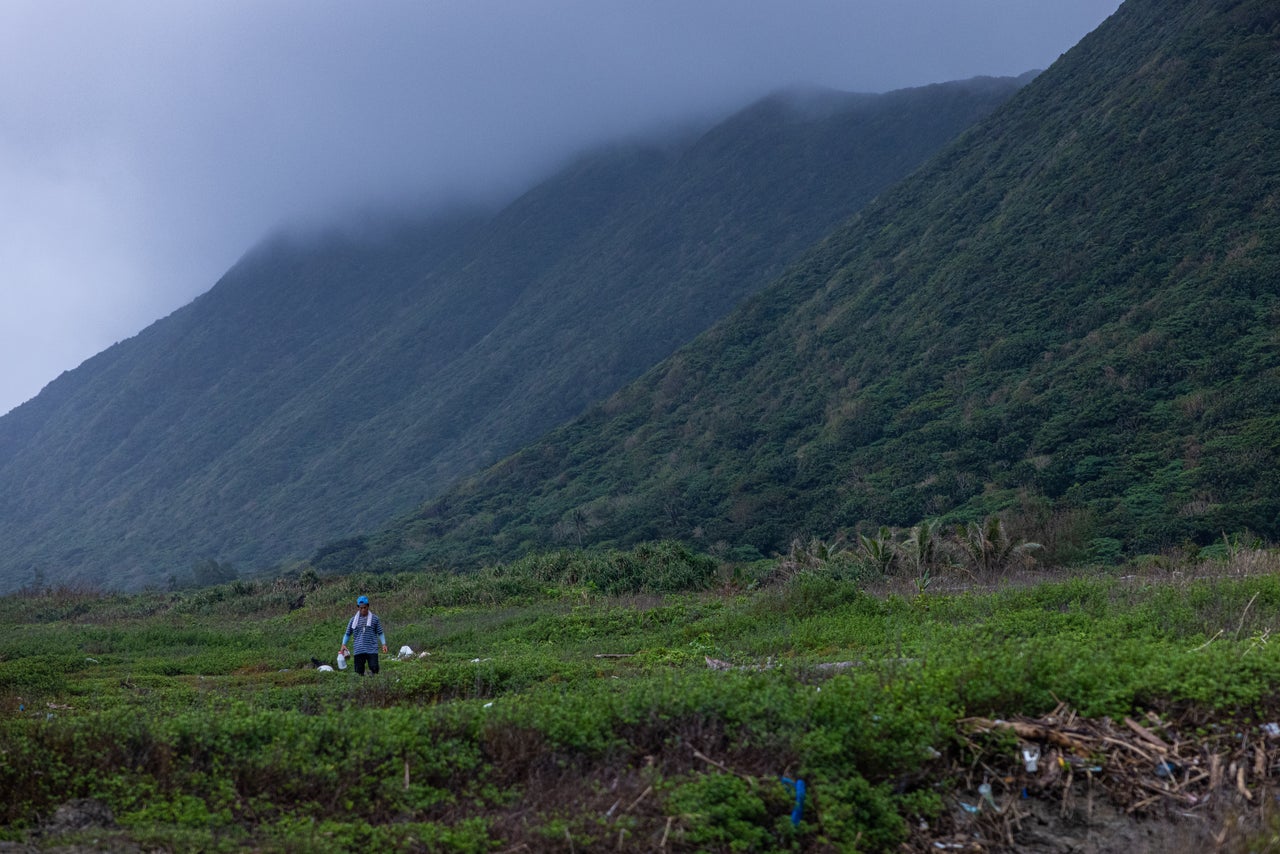
The View From Lanyu
Reaching Orchid Island, known as Lanyu in Mandarin, is no simple jaunt.
Assuming you started your journey in Taipei, you need to take trains about four hours south and then east to reach Taitung, the beachy coastal town that awakens to the thunderous boom of Taiwanese Top Guns taking off in F-16s for morning practice runs.
From there, you could take a puddle jumper, but good luck getting one ― it’s a coin toss as to whether weather will cancel the flight, particularly in the rainy autumn. Absent wings, the only option is a cash-only ferry that boards via a gang plank from a concrete fishing jetty.
There’s as much cargo as there are travelers returning home from a weekend on the Taiwanese mainland. Every seatless cranny inside is stacked with boxes of vegetables, milk and live chickens, and the boat isn’t that big – it looks more like a narrow fishing vessel than the wide-berthed passenger ships that come to mind when you think of a ferry.
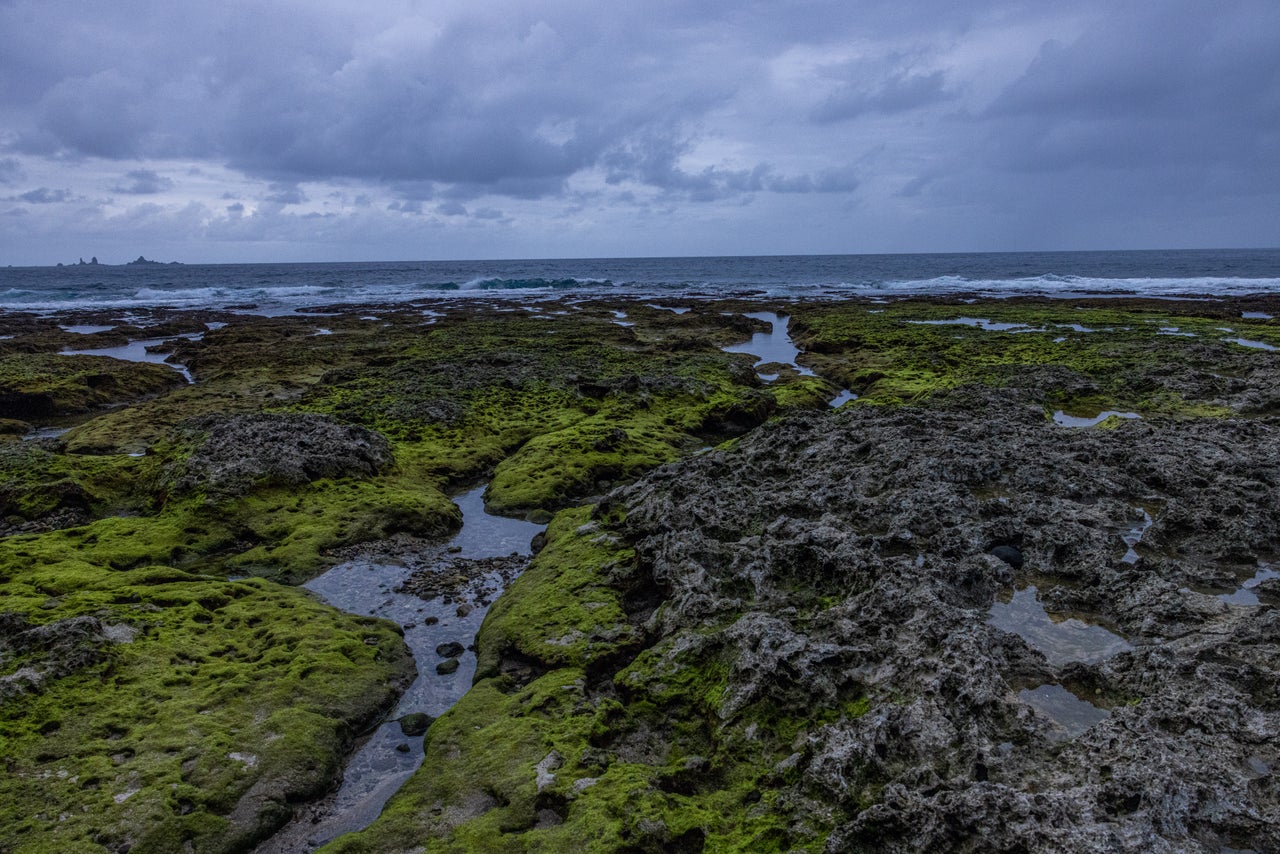
Watching from the ship’s open stern, it took only about 45 minutes for Taiwan’s mountainous silhouette to melt into the mauve mist on the horizon. Another nauseating two hours thrashing in the waves ended only as Orchid Island’s dramatic cliffs appeared, heralding dry land like ancient rock lighthouses.
The island is home to the Tao people, who are related to Indigenous Filipinos from nearby islands and make up most of the island’s nearly 5,100 residents. Their unique culture is everywhere. Banners bearing the Tao’s red-white-and-black octagonal crest adorn the low fences surrounding soggy green fields of taro, the local staple carbohydrate. Ornate canoes, called ipanitikas, hand-carved from single tree trunks, may outnumber automobiles. And though most new construction looks like modern Taiwanese architecture, there are still whole villages of homes built the traditional way, dug into the ground to weather monsoon winds.
The remoteness that preserved the Tao way of life also made it an attractive location to dump waste that no one else wanted anywhere near them.
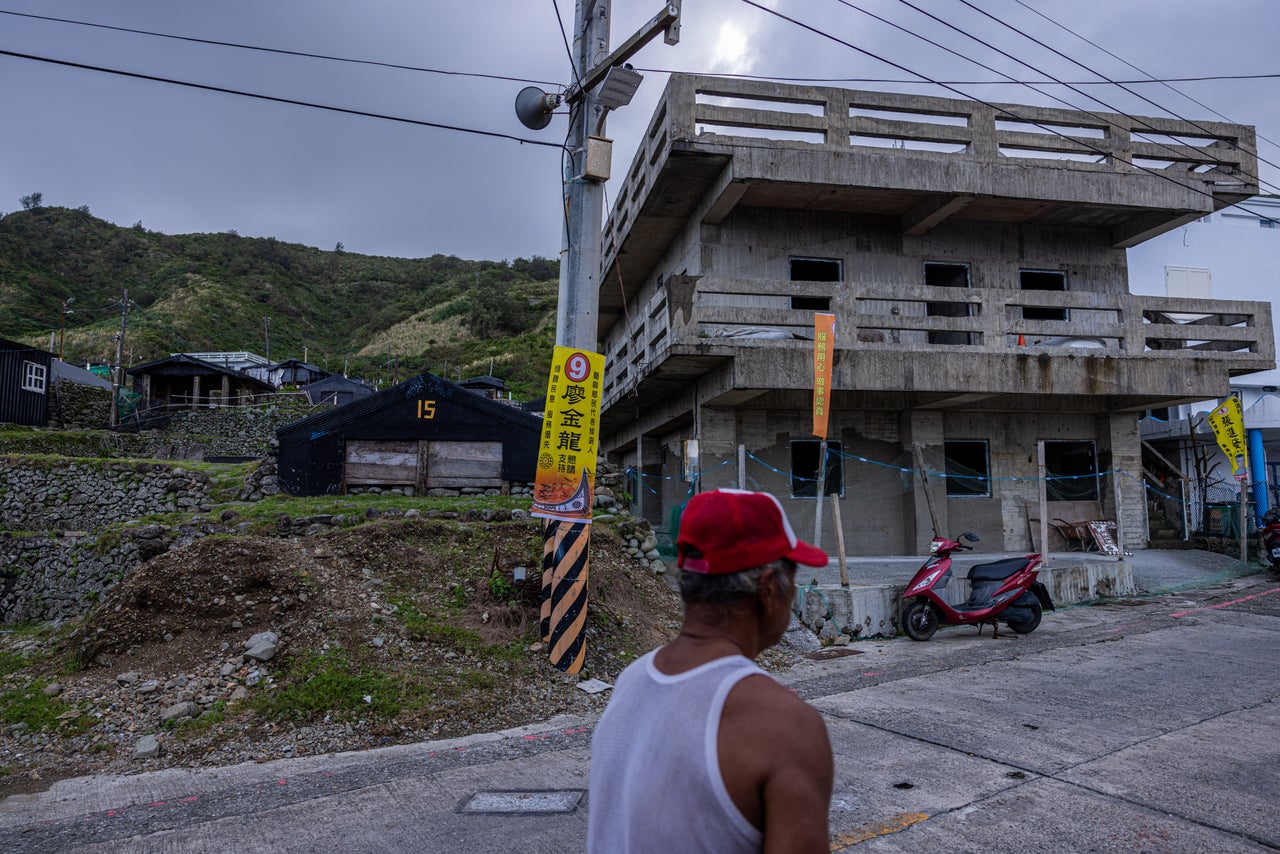
In the 1970s, construction crews arrived from Taiwan and built a complex on Lanyu’s southern tip of bland-looking single-story buildings behind a towering rock wall and barred front gates. Workers told Tao chiefs, many of whom did not speak fluent Mandarin, that the plant would be a fish cannery. But the cylindrical canisters that workers started moving there in 1982 actually contained low-level nuclear waste, which was stored in specially designed disposal units in what looks like painted-green dumpsters built in concrete cemetery rows.
After learning what was in the facility, the Tao people revolted, staging protests and blocking ships from unloading fresh radioactive cargo. The shipments ended in 1996. At one point, there were renewed fears when corrosion was discovered on some of the drums of waste. But Taipower resealed the containers.
Now the perennial but largely inactive fight has been over whether the waste can be moved elsewhere. But many residents on Orchid Island work at the facility. While some complain that Tao people are hired for lower-paid jobs than Han Taiwanese, the Taipower dump offers some of the best employment on the island. And locals who spent years at the facility put friendly and trustworthy faces to what was previously seen as a monstrous invader.
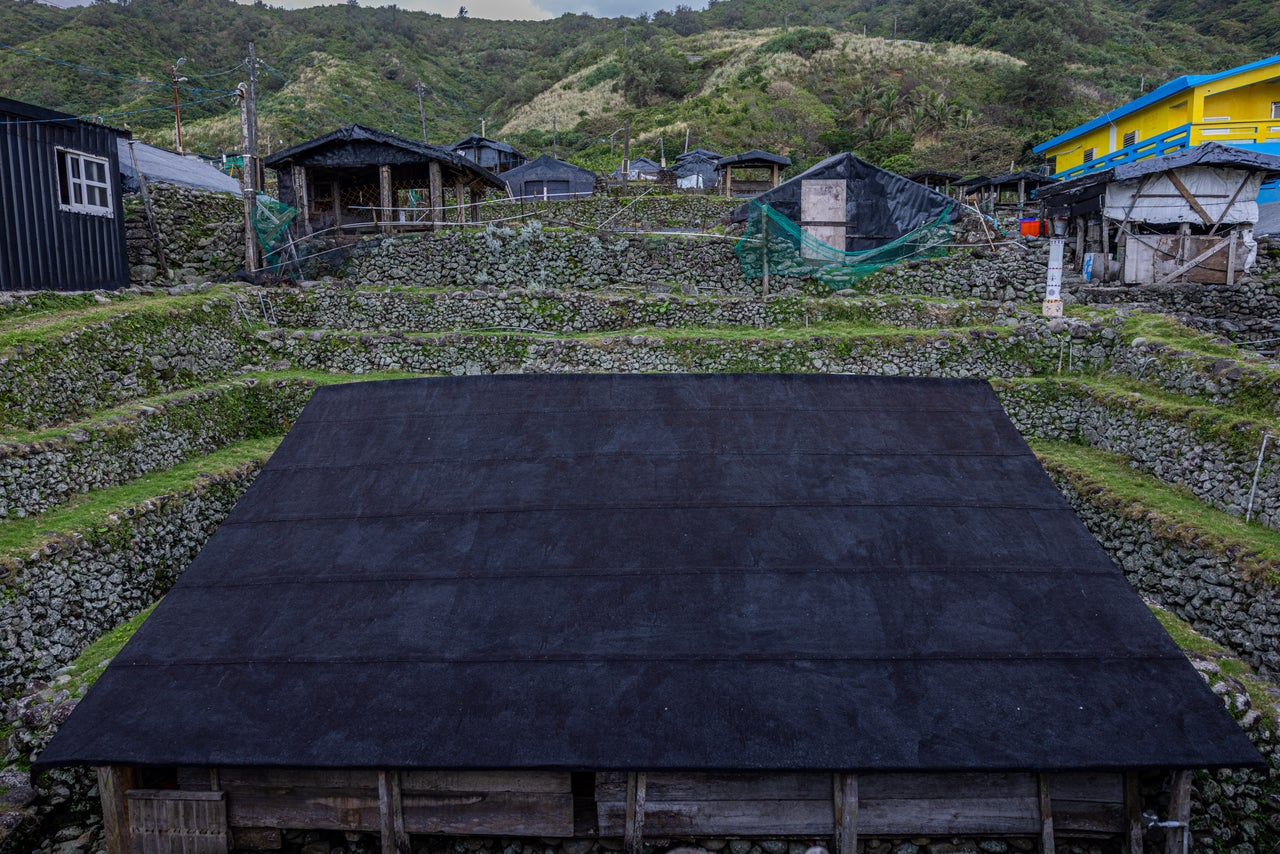
Crouched down to smoke a cigarette on the windy deck of the ferry, Chen Jun-xian, 40, a restaurant owner on Orchid Island’s more touristy east side, said “local people are 50-50 on supporting leaving the waste here.”
“The technology is getting better and better, so it’s going to be safer to store it,” Chen said. “And a lot of local people are actually helping to store it. They work for the plant.”
Over the past 20 years, at least 60 local residents have complained of thyroid problems, a symptom of radiation exposure, according to Syaman Lamuran, an Indigenous Tao who runs a hostel near the ferry dock. At least three people have gotten cancer that they blamed on the waste, he said.
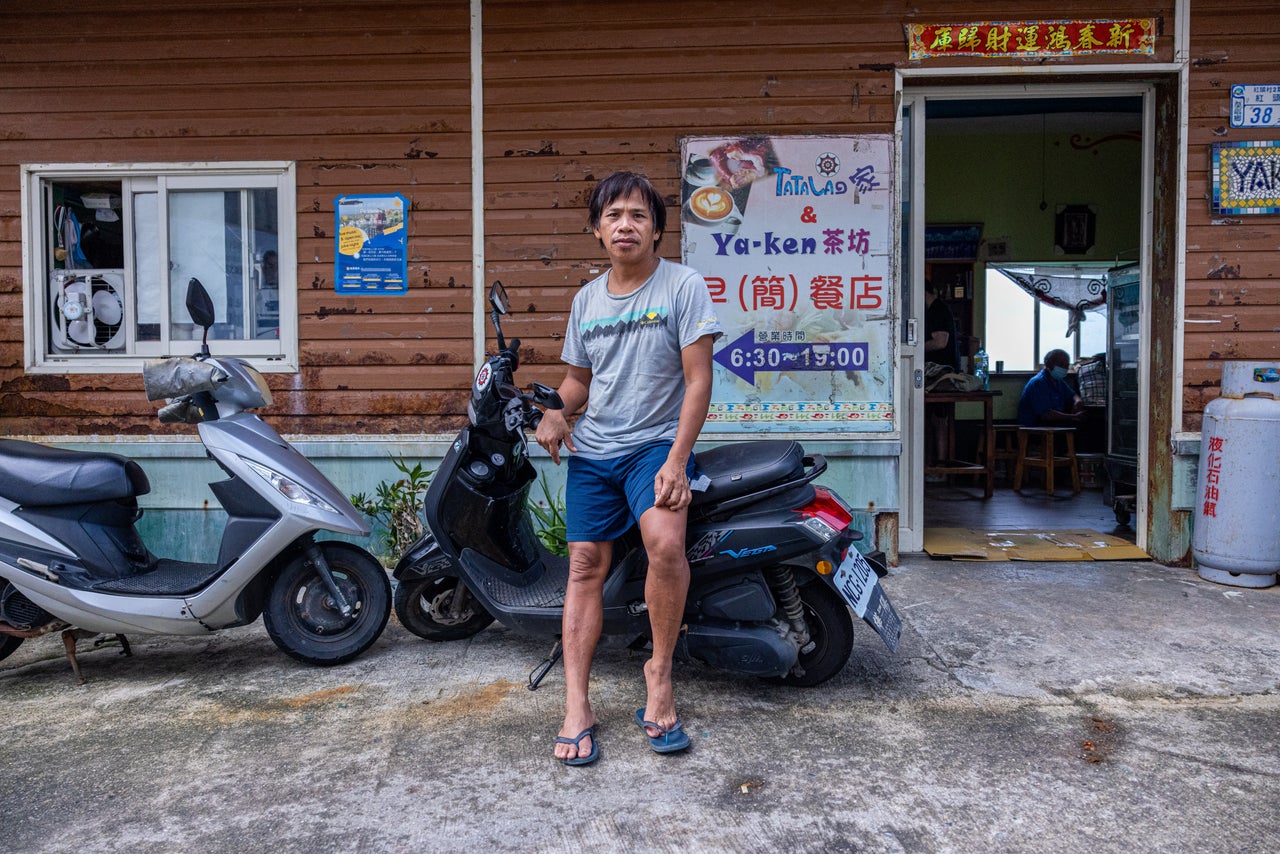
Born and raised here, a 47-year-old man who gave only his Indigenous given name, Lomai, said he joined Tao elders demonstrating against the waste plant when he was a teenager. But he became active in protests after the 2011 Fukushima disaster.
“That’s how I became aware that nuclear power is quite dangerous,” he said.
Then, about four years ago, a close friend who went to work for the facility died of cancer. Lomai blamed the waste.
“Since the waste has been put on Lanyu, the number of people getting cancer has risen,” he said over a breakfast of noodles in marinara sauce.
The number of cancer cases has increased in recent decades, according to a Taipei Times report citing unnamed medical records. But government studies have repeatedly shown that the cancer rate on Orchid Island is below the national average.
In 1980, two years before the nuclear waste dump opened on Orchid Island, Taiwan’s overall rate of cancer was 86 incidents per 100,000 people, climbing to 275 in 2008, according to government data. During that same period, Orchid Island saw the cancer rate of 35 cases per 100,000 people in 1980 increase to 149 in 2008.

To some, those statements seem suspect. In decades past, officials from the Taiwanese government “put pressure” on Lamuran’s father, telling the prominent local chief, “Don’t say anything bad about the nuclear waste.”
Amid the protests in the 1980s, some Taiwanese politicians argued that the Tao should just move away from the island.
“We’re a small minority,” Lamuran said. “We even heard politicians say, ‘These people can just move and relocate to Taiwan.’”
These days, however, politicians largely ignore the issue altogether. Every few years, around election time, some candidates will tout plans to move the waste dump off Orchid Island.
“Once the election is finished, it just disappears,” said Jiang Yu-mei, 50, the owner of a hostel and restaurant on the west side of the small island. “Nobody talks about it anymore.”
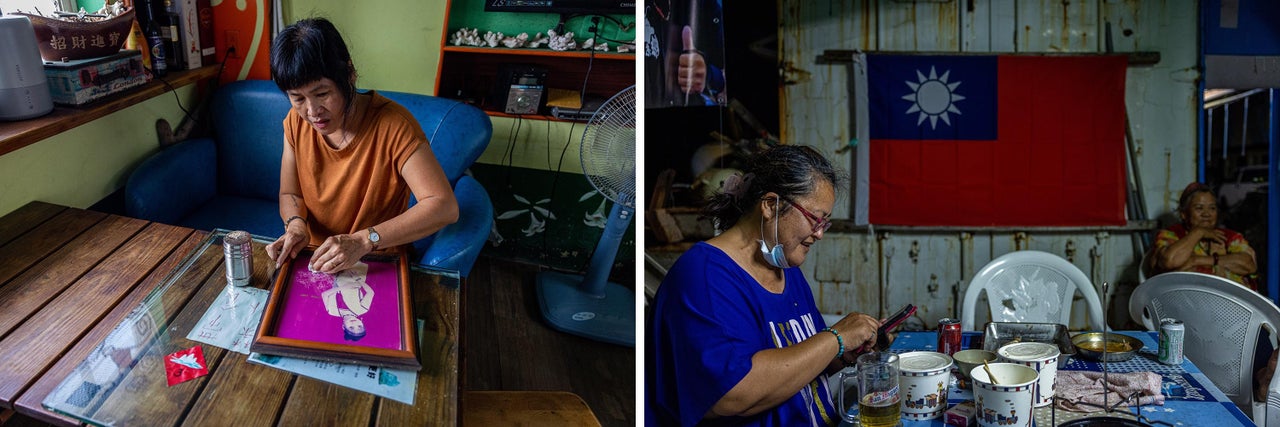
Nobody, except maybe Du Xiao-wan.
The 54-year-old painter moved to Orchid Island after meeting her husband, who is Tao, more than 30 years ago. She’s ethnically Han, but her children are half Tao and she always urged them to learn the language and speak it with their grandmother. Her husband recently retired after a career spent working at the waste storage facility. She painted murals of traditional Tao scenes on the rock wall in front of the site and across the island.
She’d like to see the waste go. But she sees it largely as a settled issue at this point. What worries her, she said, is that the waste conflict has been used to justify shutting down Taiwan’s atomic reactors.
“It’s some of the cleanest power that we have and the safest thing until we develop nuclear fusion,” Du said, picking at a pan of roasted chicken under a tent of tarps by the waterfront one evening. “If we abandon nuclear power plants, it means we use more coal and gas, and it really destroys the climate.”
Taiwan, she said, “was not suitable for only using wind power or solar power.”
“We only have strong winds during the winter and autumn,” she said as a gust crinkled the creases out of the tarps she sat under. “And the solar panels use too much land.”
The next day, a rain storm swept in, canceling the flight back and almost halting the afternoon ferry, too. Thanks to Dramamine, I made it back on the final ferry with the steamed taro bun I ate for breakfast still in my stomach.
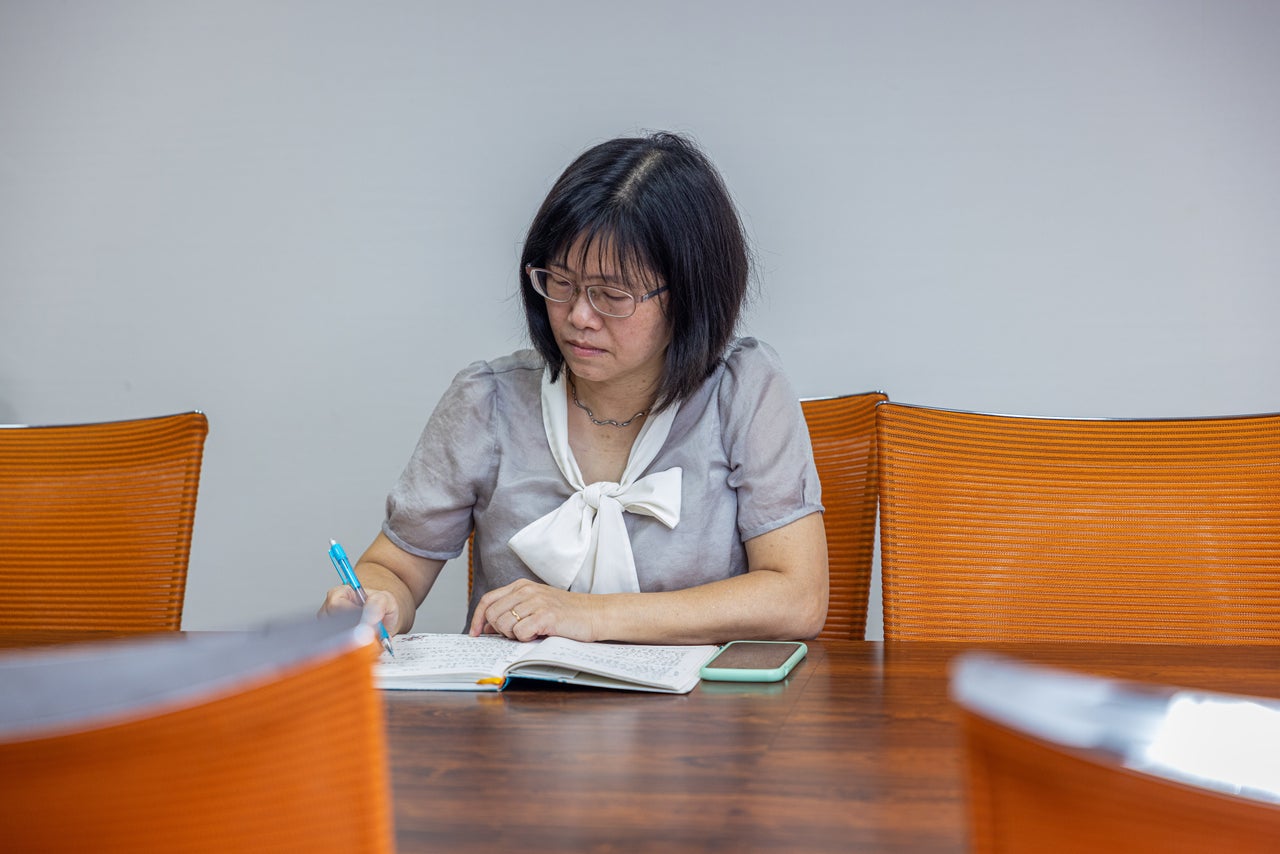
While Nuclear Idles, New Fossil Fuel Plants Rise
Back in Taipei two days later, I met Hsu Hsin-hsin at the Legislature Building. With a prim bob of black hair and sea-green glasses, Hsu was an environmentalist and congressional staffer for the New Power Party, a minor progressive party. She had been living in Taichung, the industrial hub on Taiwan’s west coast, for a few years when she realized something was wrong. Her two kids, now in college, were constantly sneezing and sniffling. She might have brushed it off as allergies, but neighbors’ children had even worse symptoms.
“My friends’ kids have nosebleeds whenever they wake up,” Hsu said. “It doesn’t matter how much medicine they take.”
The problem, she said, was the air. Taichung’s coal-fired forges, factories and power plants spew tiny pollution particles into the air that easily penetrate cloth masks and lodge in lungs, where, over time, a growing body of peer-reviewed research has shown they trigger a range of diseases, from cancer and heart failure to erectile dysfunction and dementia.
Gas-fired plants produce similar air pollution, albeit less of it. Nuclear reactors generate none. Still, when asked if she supported the phaseout of nuclear energy, Hsu answered yes, noting that she is an environmentalist and she opposes creating more radioactive waste.
“The goal has been a no-nuclear homeland, so we have to use natural gas while we transition to 100% renewable energy,” Hsu said.
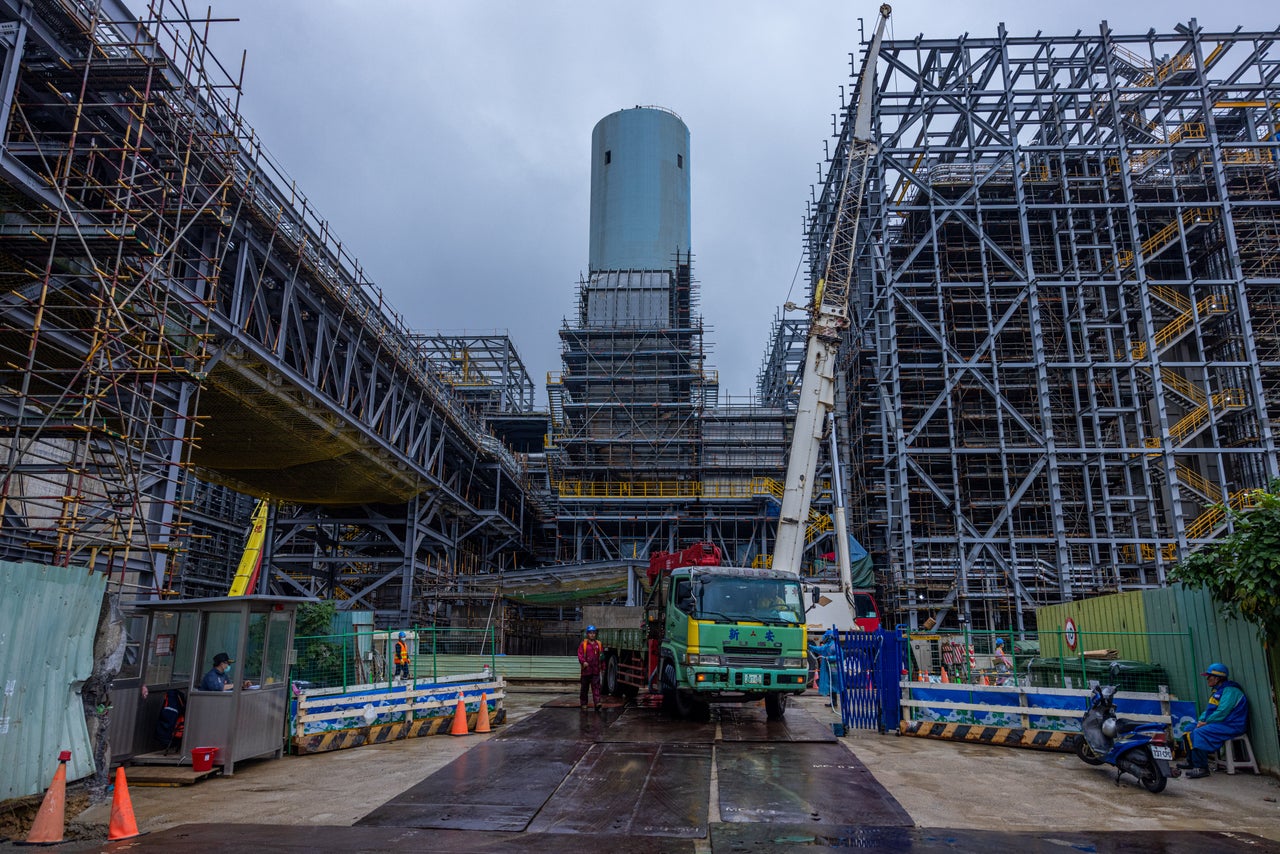
Asked which countries she considered a model for decarbonizing without nuclear energy, she named two: Finland and Sweden. She hadn’t realized the Nordic nations were among Europe’s most enthusiastic users of fission energy.
Still, she said pro-nuclear elements in Taiwanese politics were hypocrites. The mayor of Taipei, for example, had been a vocal supporter of nuclear power as a means of cutting deadly air pollution. But the capital city wasn’t exactly welcoming new reactors within its limits either.
So what could get built?
On the shore of Changhua County, on Taiwan’s west coast, offshore wind turbines rose from the glimmering sea. But the project was behind schedule, and, when I visited one late afternoon, the blades were motionless and a fisher I asked about them replied only with a grimace.
At the Taitung train station, on Taiwan’s east coast, solar panels served mostly as awnings for diesel taxis awaiting customers in the autumn rain.
Hydroelectric stations were struggling to keep up with demand in an increasingly drought-parched part of the world, and there were no major new dams in the works. Power plants built to run on waste wood or biodiesel remained few and far between. Promising as they seem in theory, technologies to harness energy from the Earth’s molten core or the ocean’s waves and tides were still in their infancy.
In the past six years, nearly as many new coal-fired units were opened. These coal generators were more efficient: Coal’s share of Taiwan’s carbon emissions fell from about 59% in 2010 to a little over 56% in 2020, according to the Oxford University-affiliated Our World in Data. But that percentage was still higher than in 2000, when the fuel produced 49% of the country’s climate-changing pollution.
After leaving the Parliament building, photographer Annabelle Chih and I took the subway to the train station and boarded the high-speed rail to Taoyuan County, about an hour from Taipei. When we arrived, we hired a taxi and asked him to take us to the construction site for the natural gas terminal.
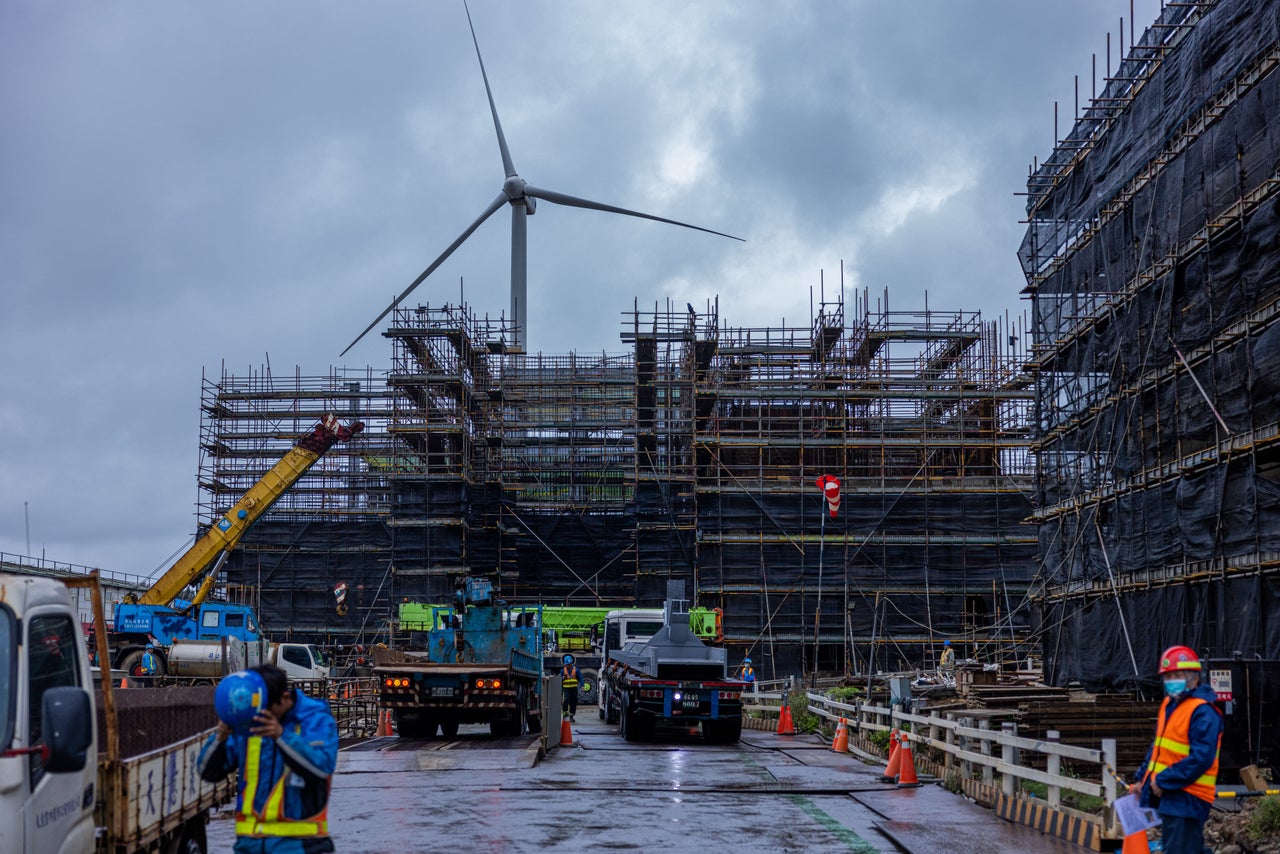
The cabbie didn’t know where to go. But after 20 minutes of driving, we came upon a giant industrial project underway right by the shore. We figured it had to be the terminal, but I didn’t see the bulbous pair of cylindrical silos I expected. At the front gate, we read the sign describing the project. It was a new gas-fired power plant.
We eventually found the gas terminal, but guards at the front gate wouldn’t allow us to get anywhere close. So we drove to an abandoned factory several hundred yards away and ran up its concrete exterior stairway. From the fifth-floor landing, we could see the gas terminal on the shoreline. It looked small from such a distance.
Catching my breath, I turned to Annabelle and asked, “Do you really think this is going to be enough?”
Two days earlier, on Nov. 21, Japan’s trade ministry had put out a major warning. Virtually every drop of liquefied natural gas expected to hit the global market between now and 2026 was “sold out,” according to the agency’s survey of companies.
That same day, Qatar, a top exporter of natural gas, announced what Bloomberg called “one of the biggest LNG deals ever,” a $60 billion, 27-year contract.
The buyer? China.
